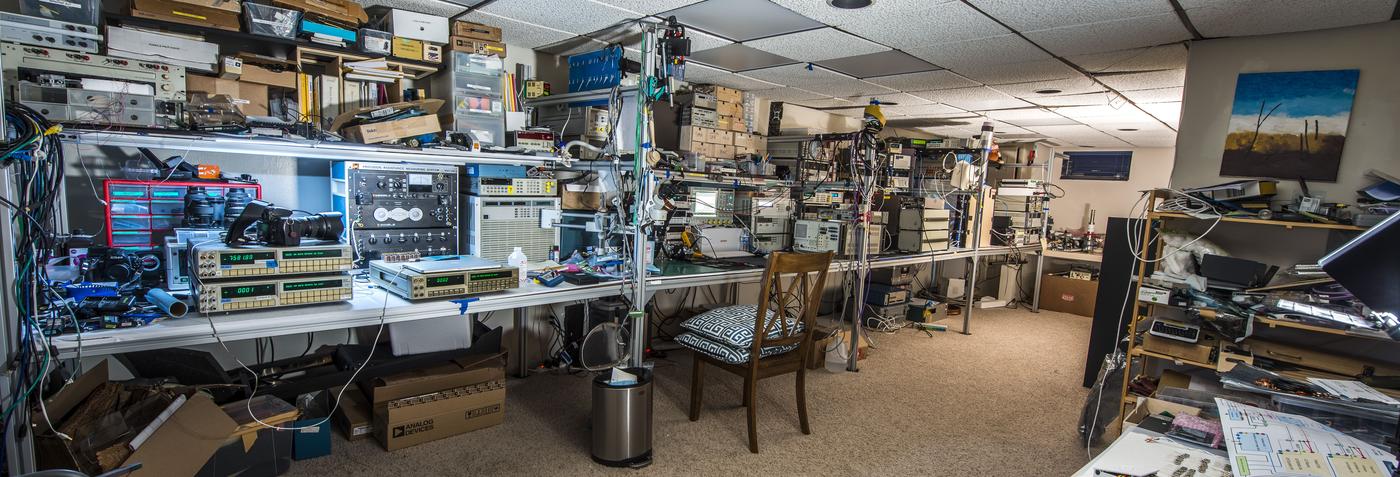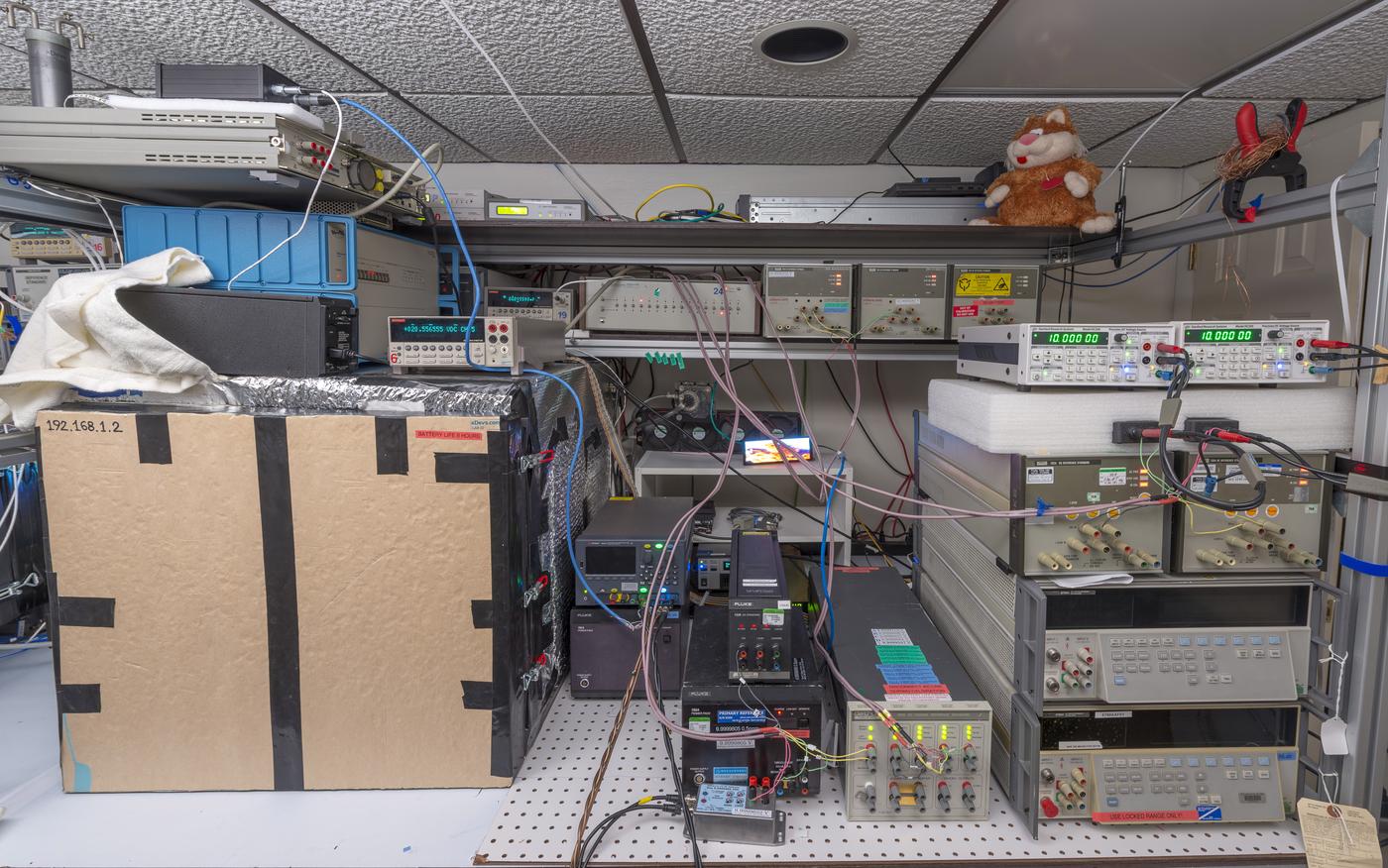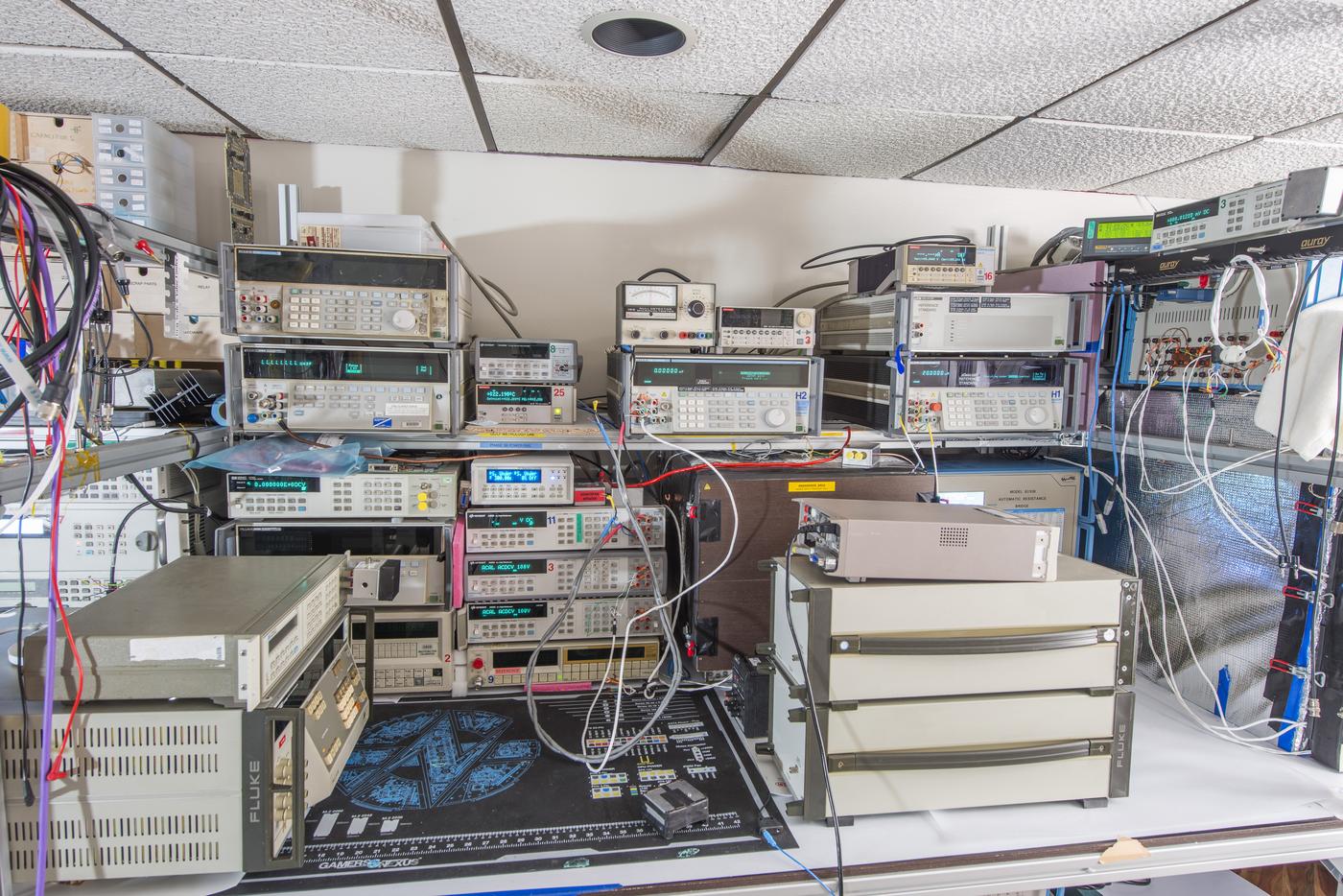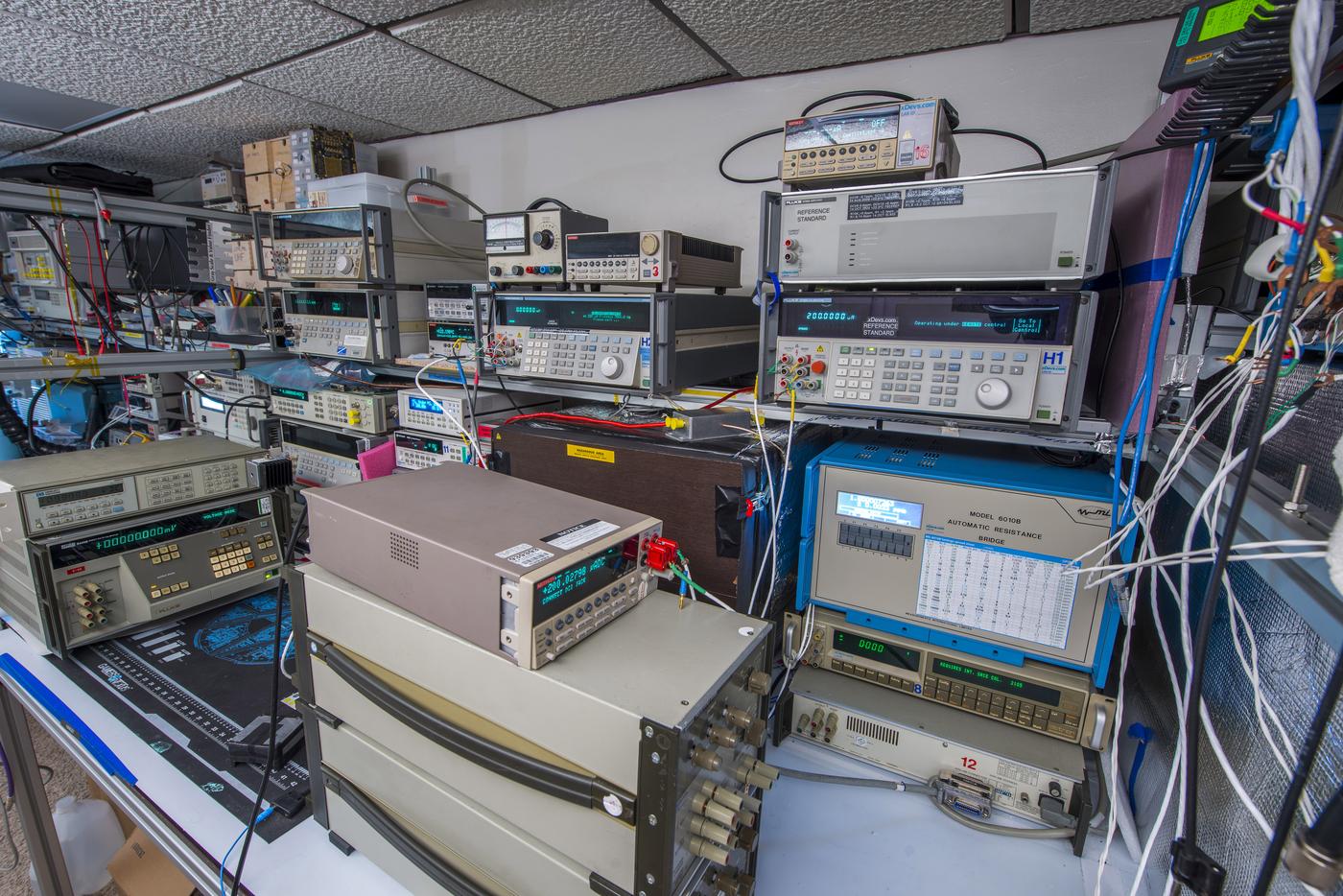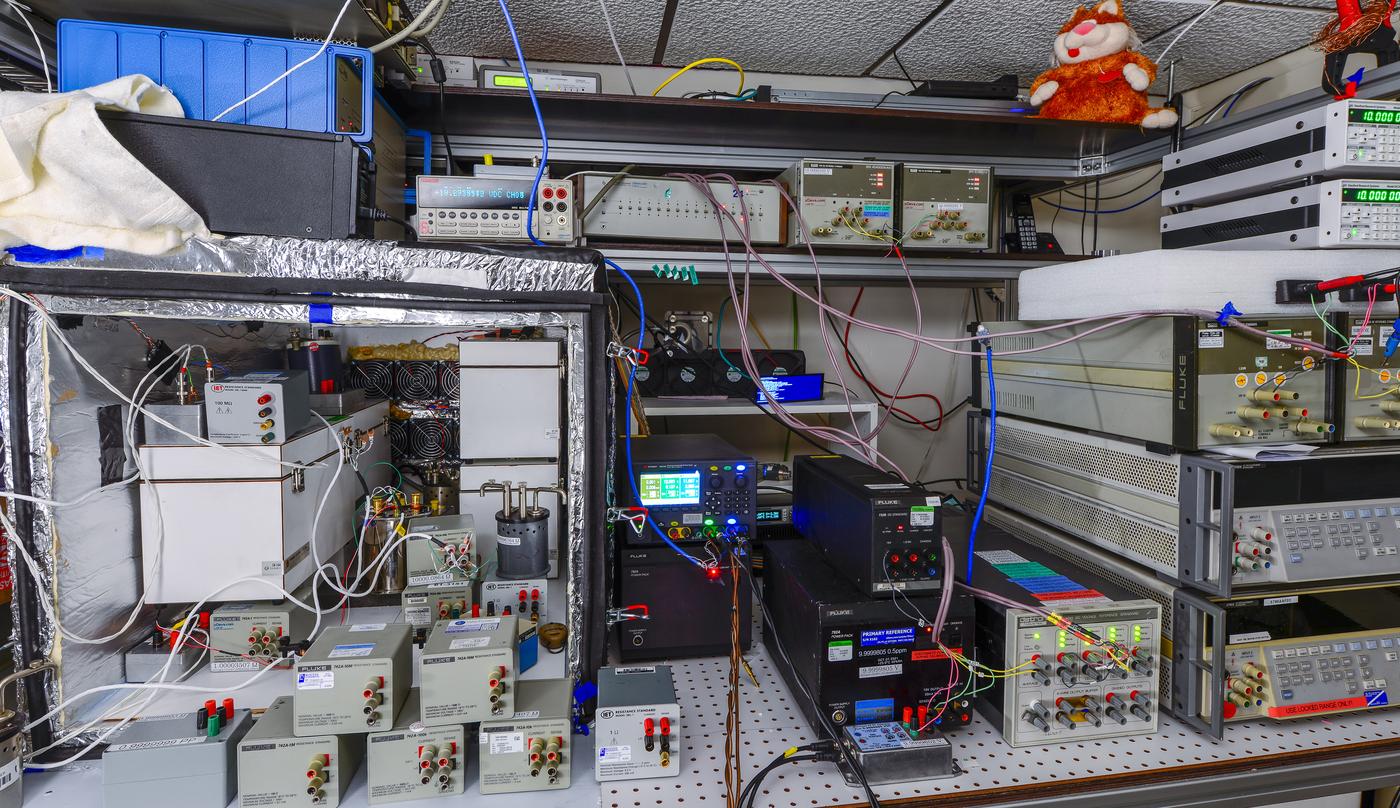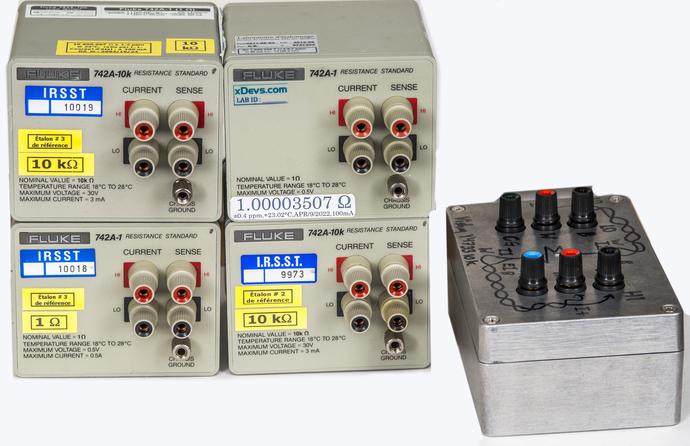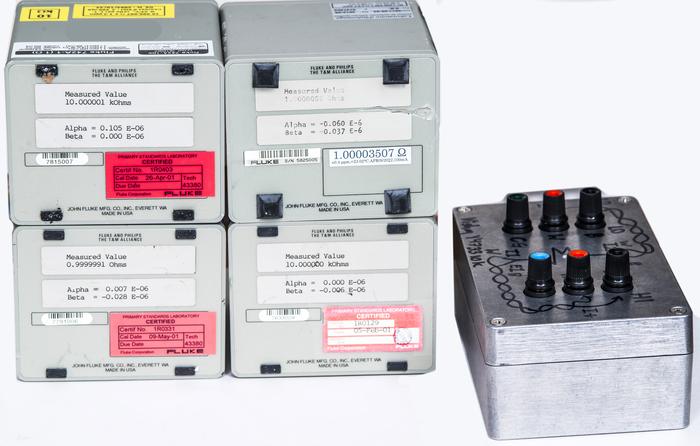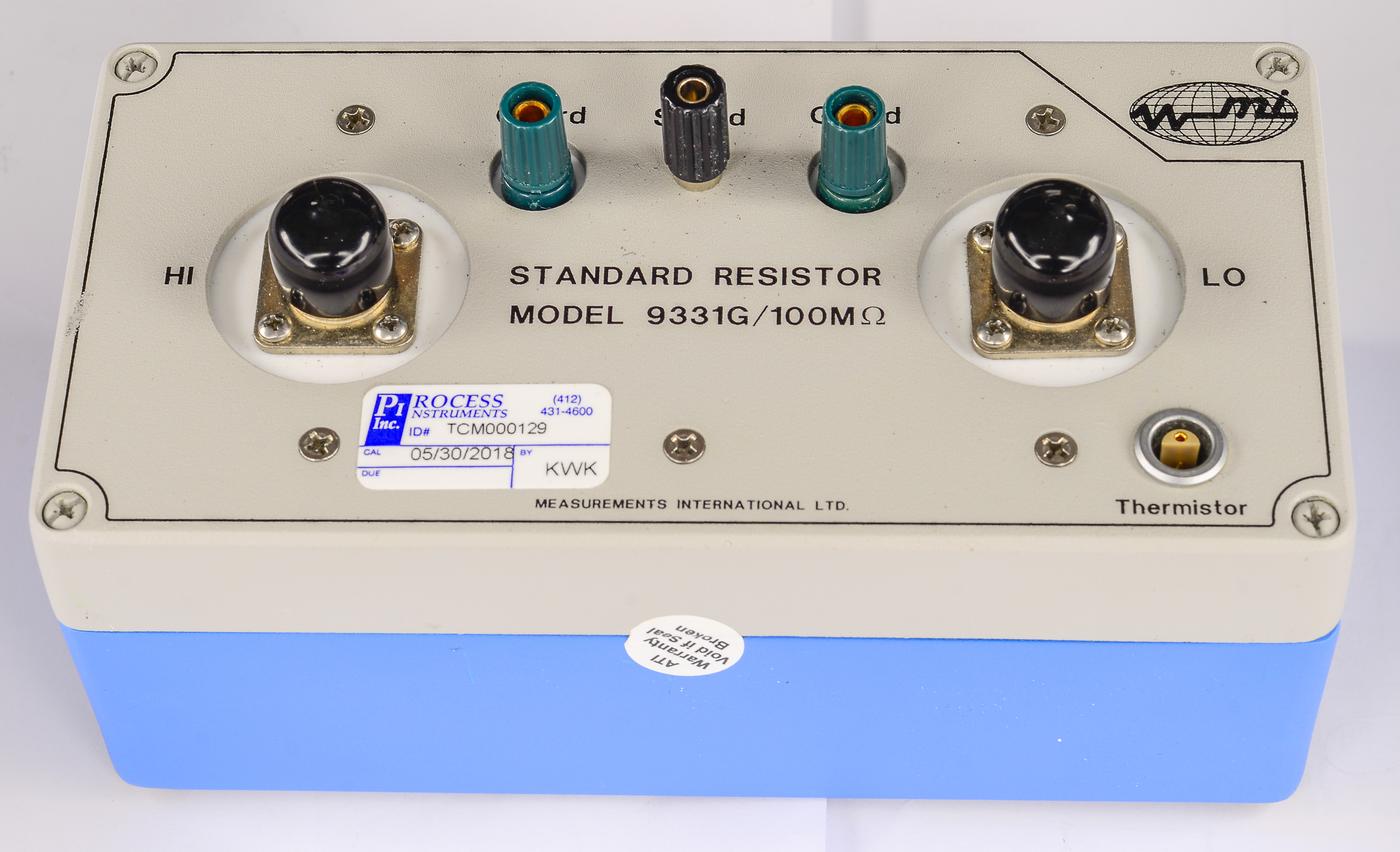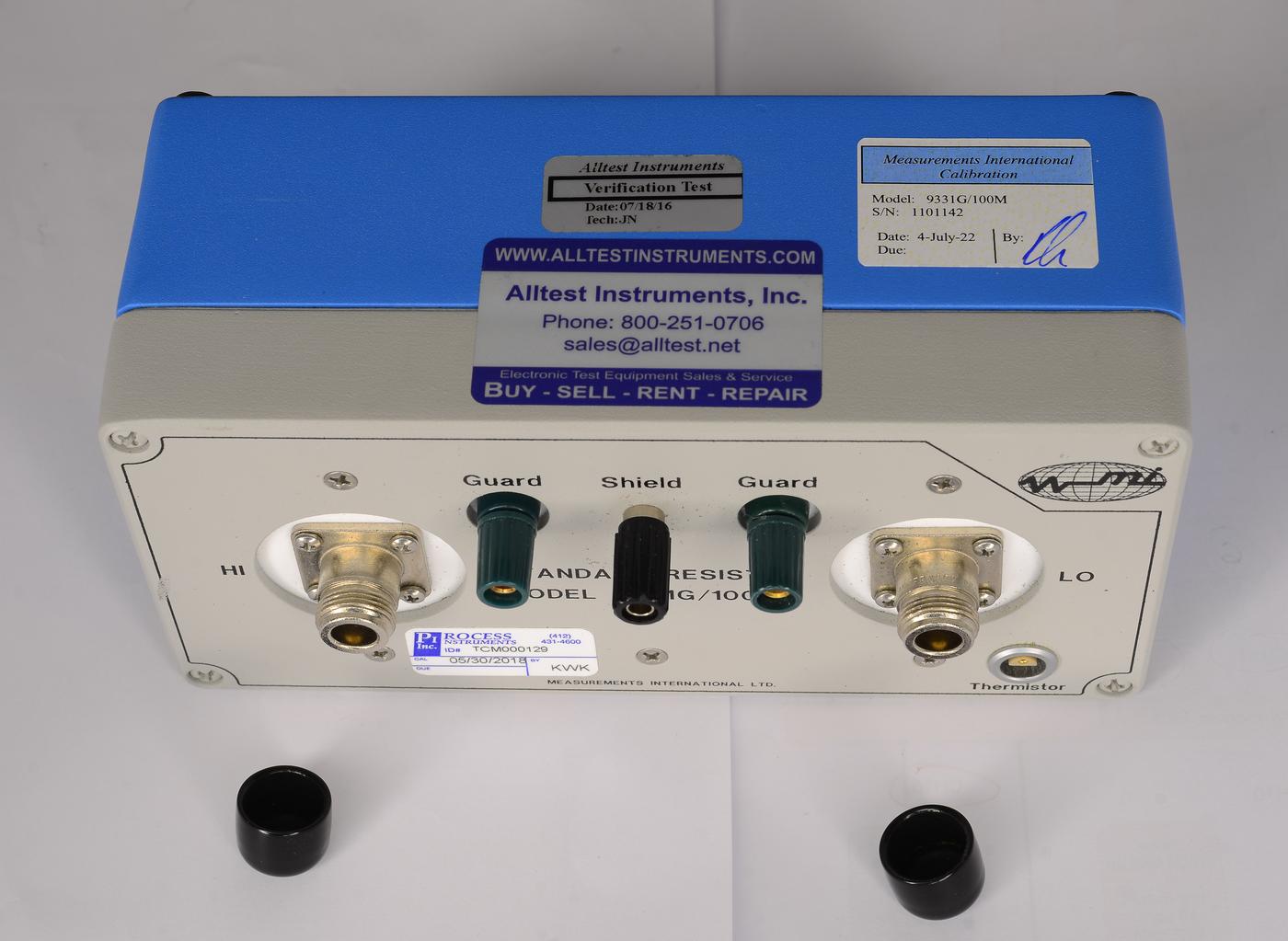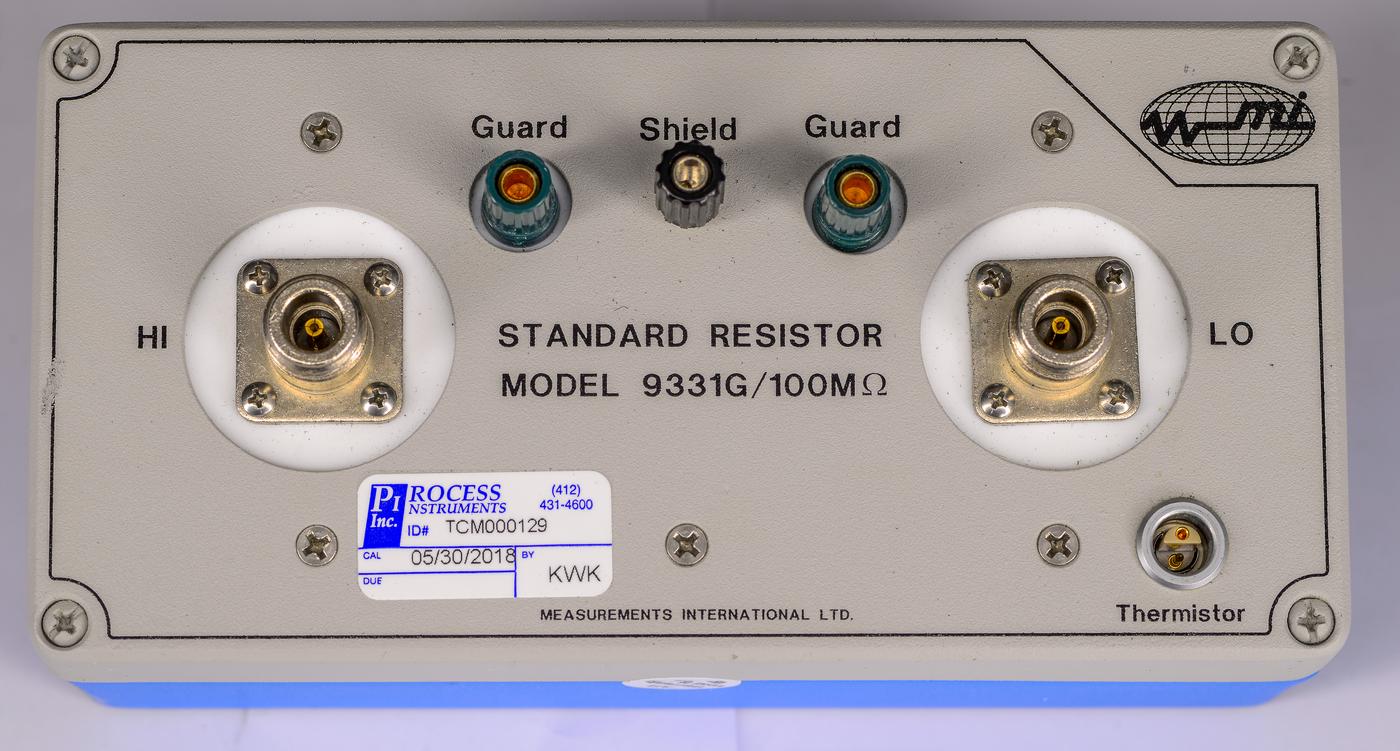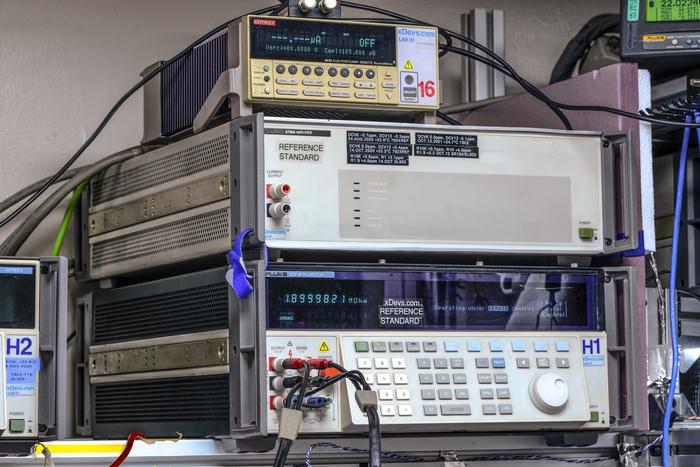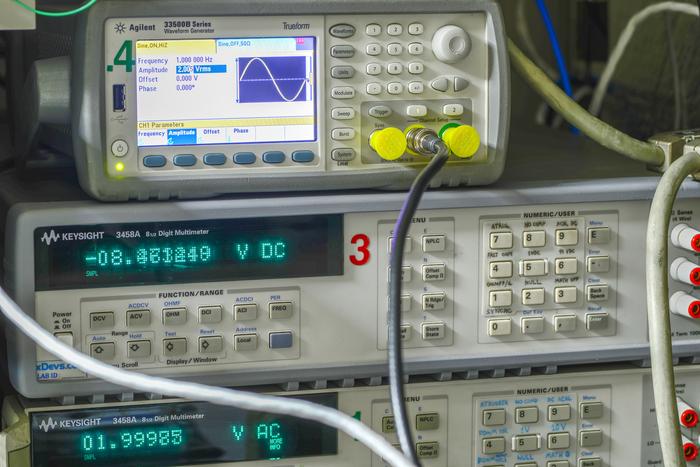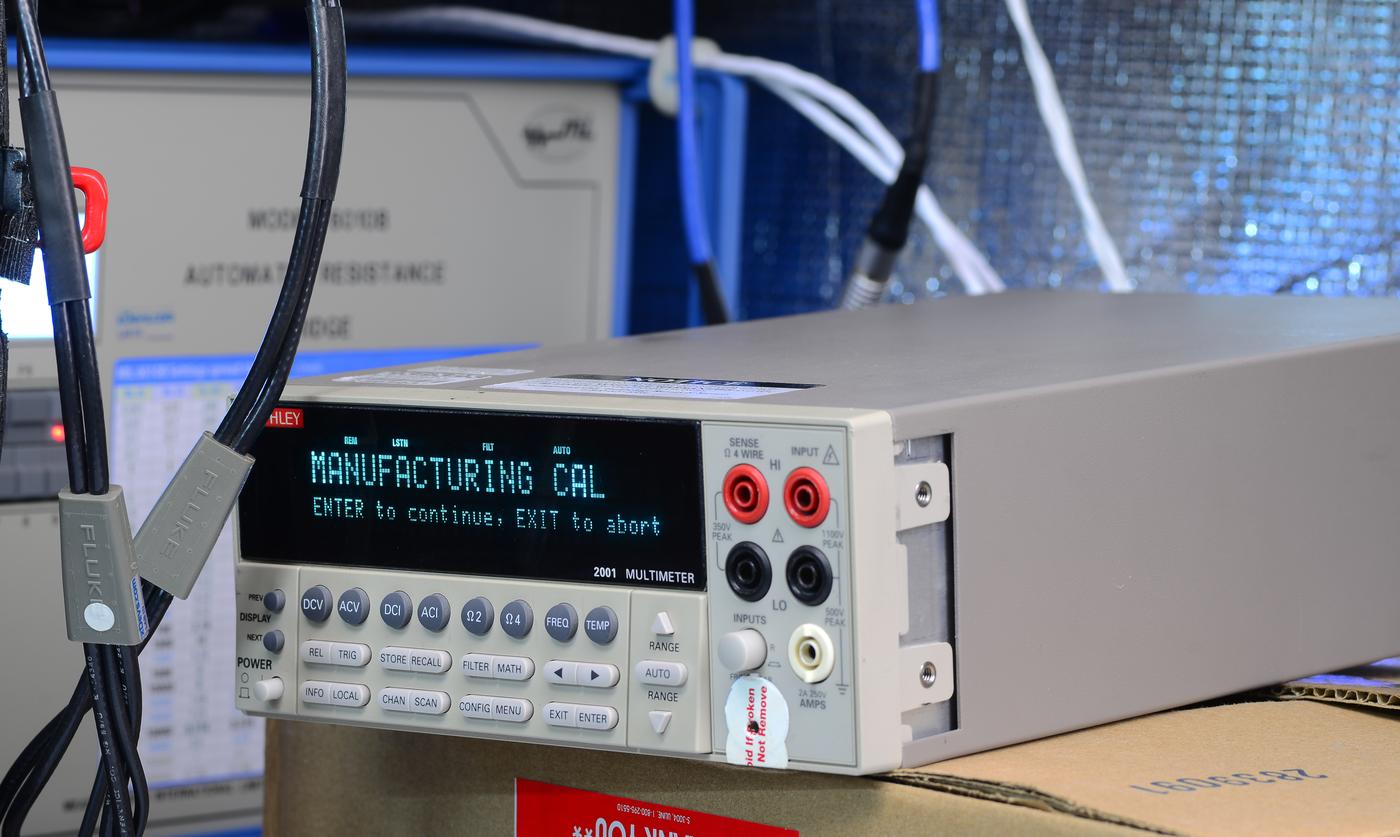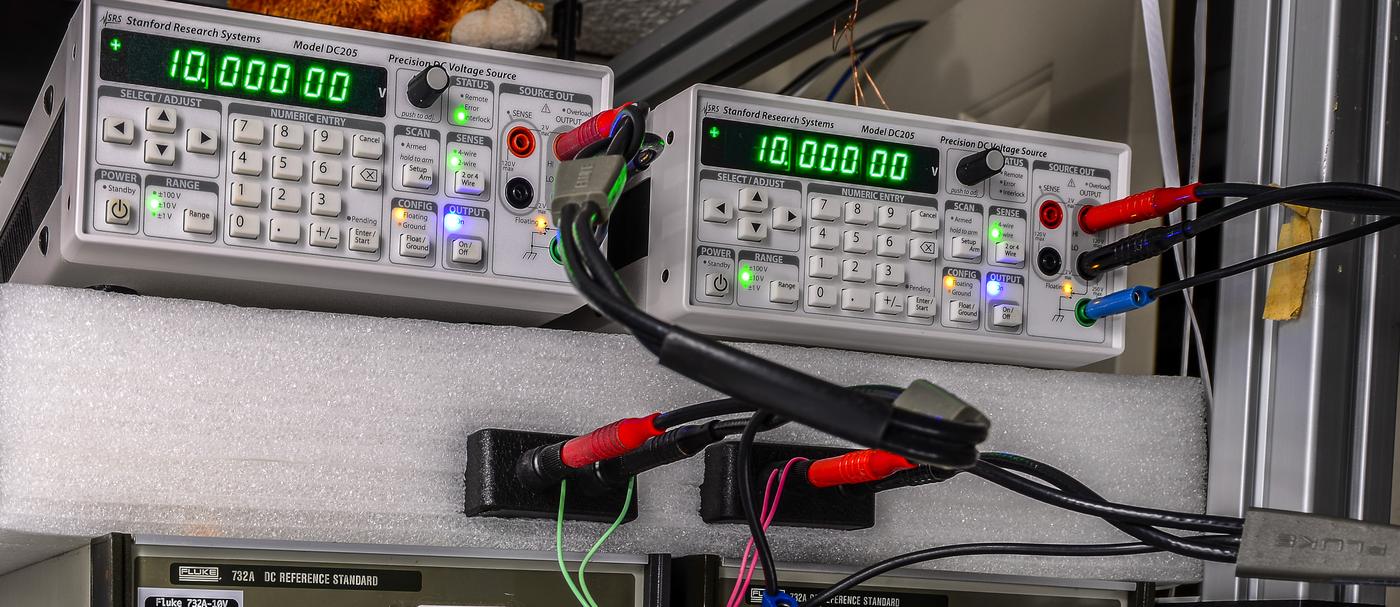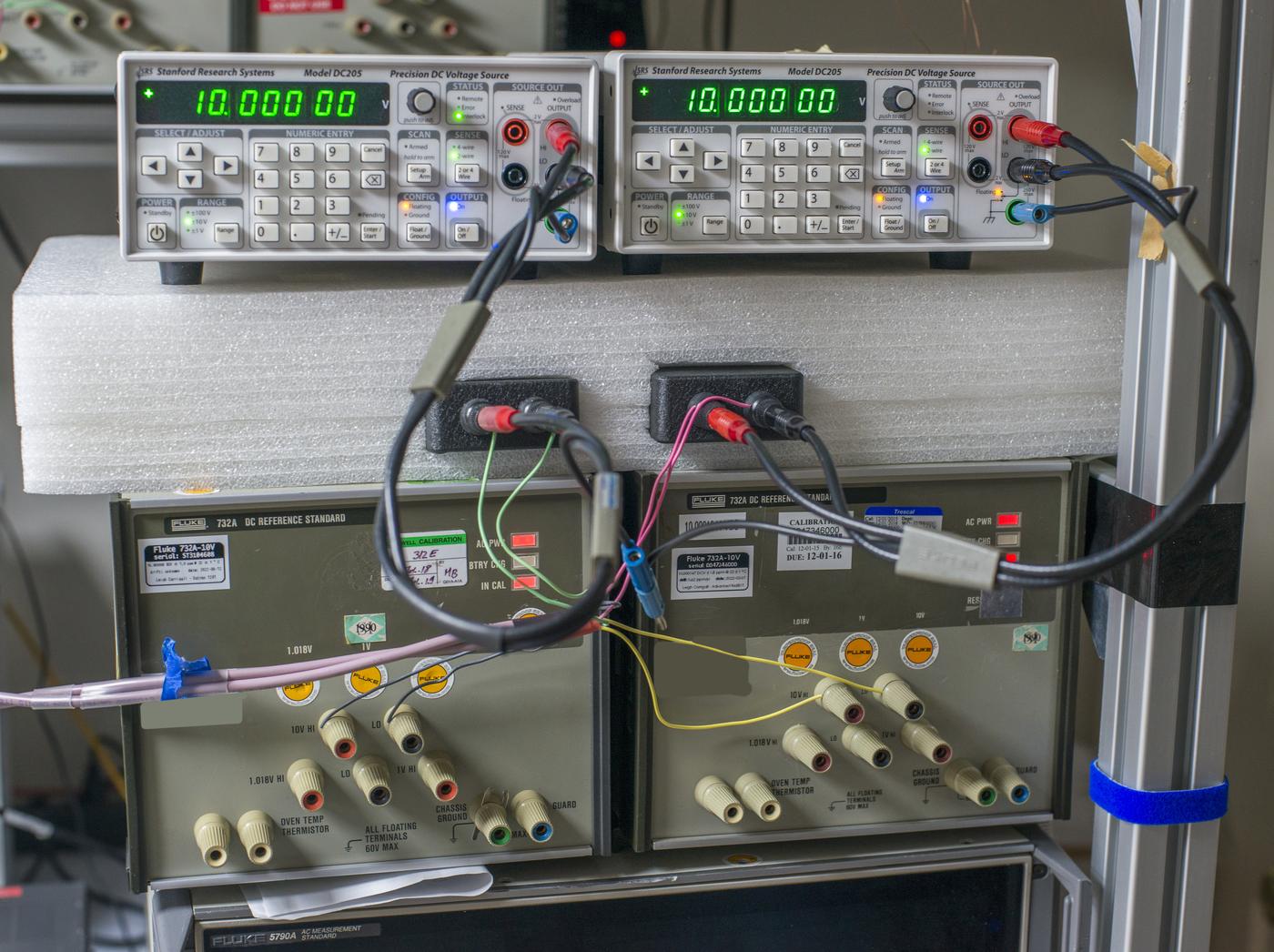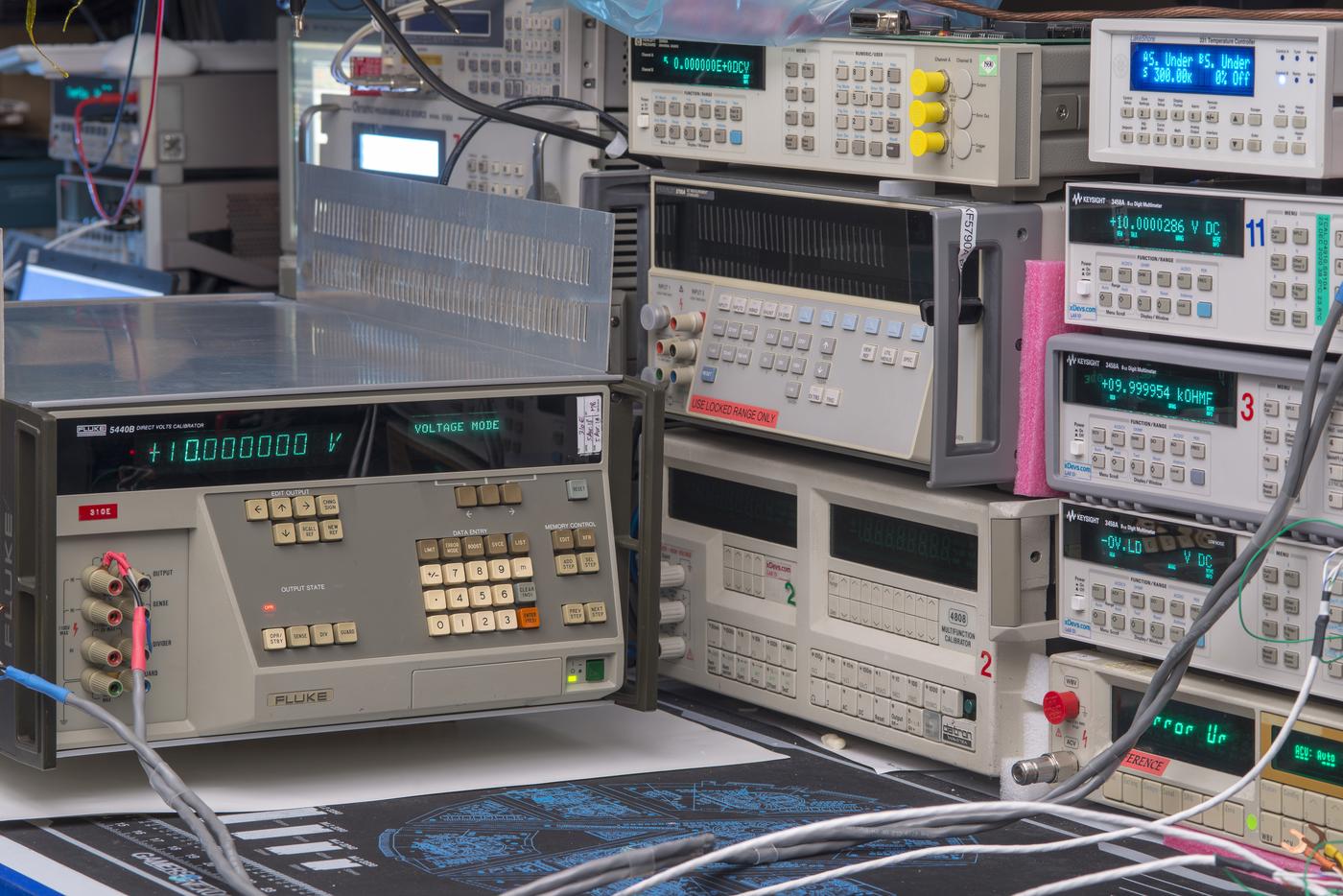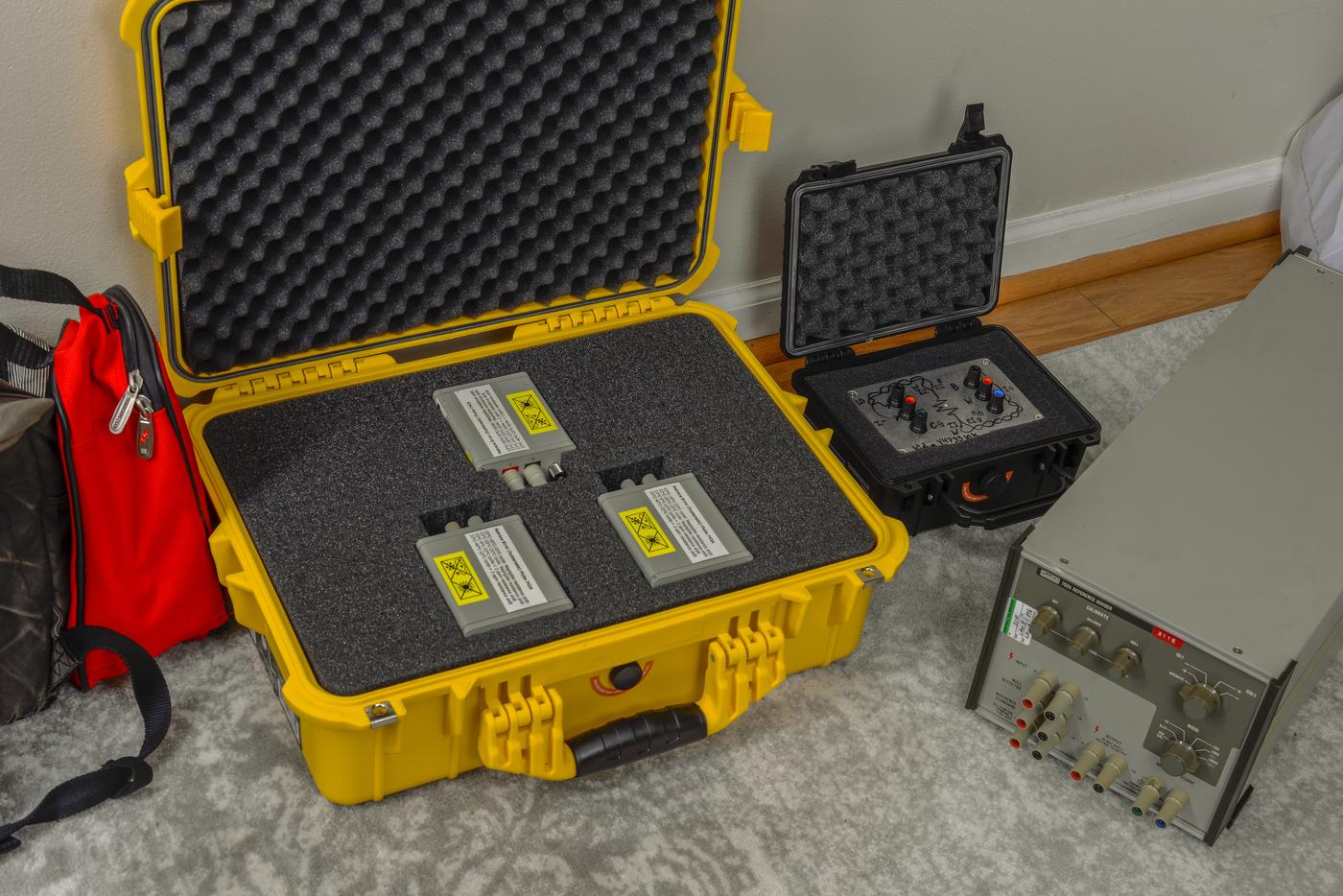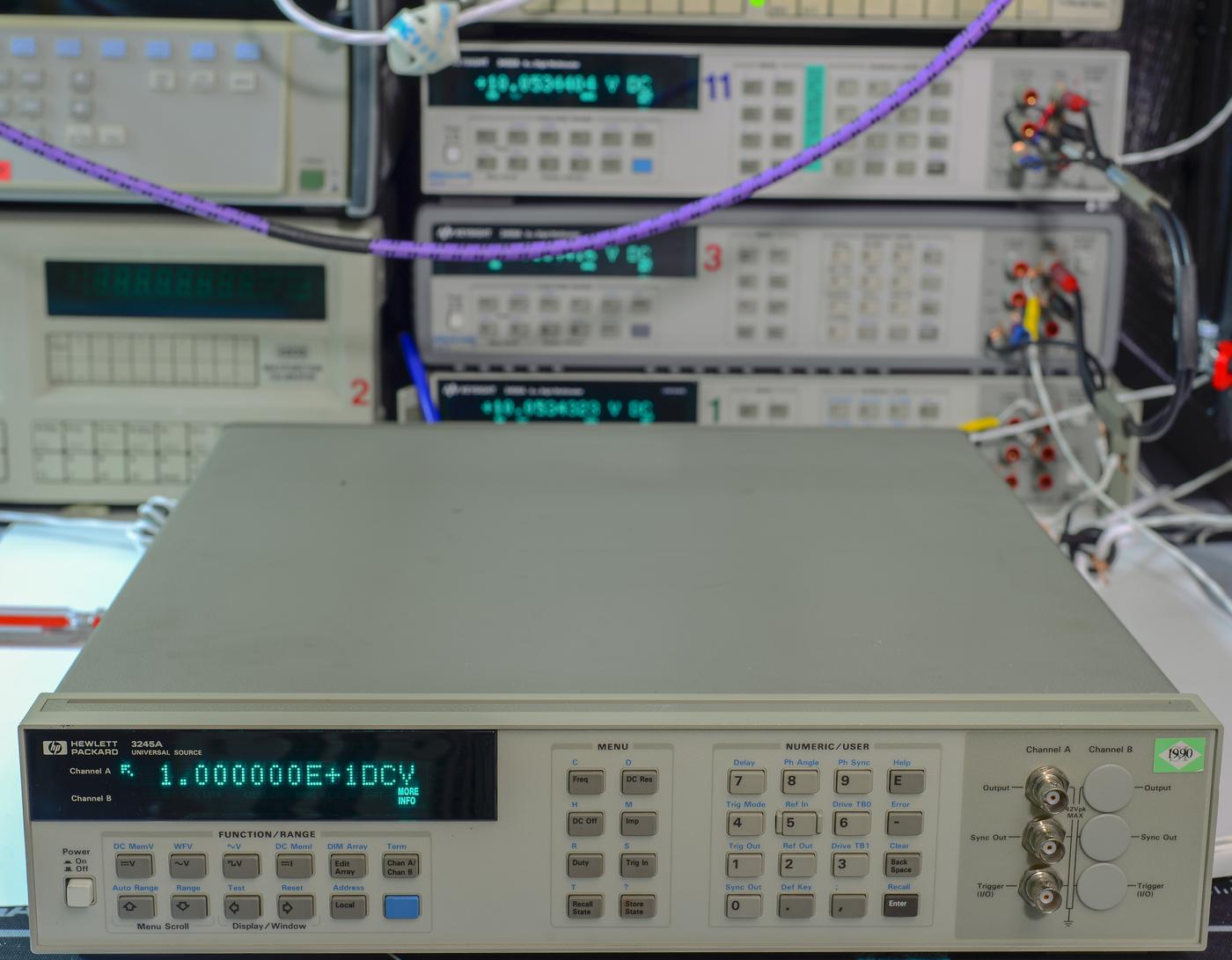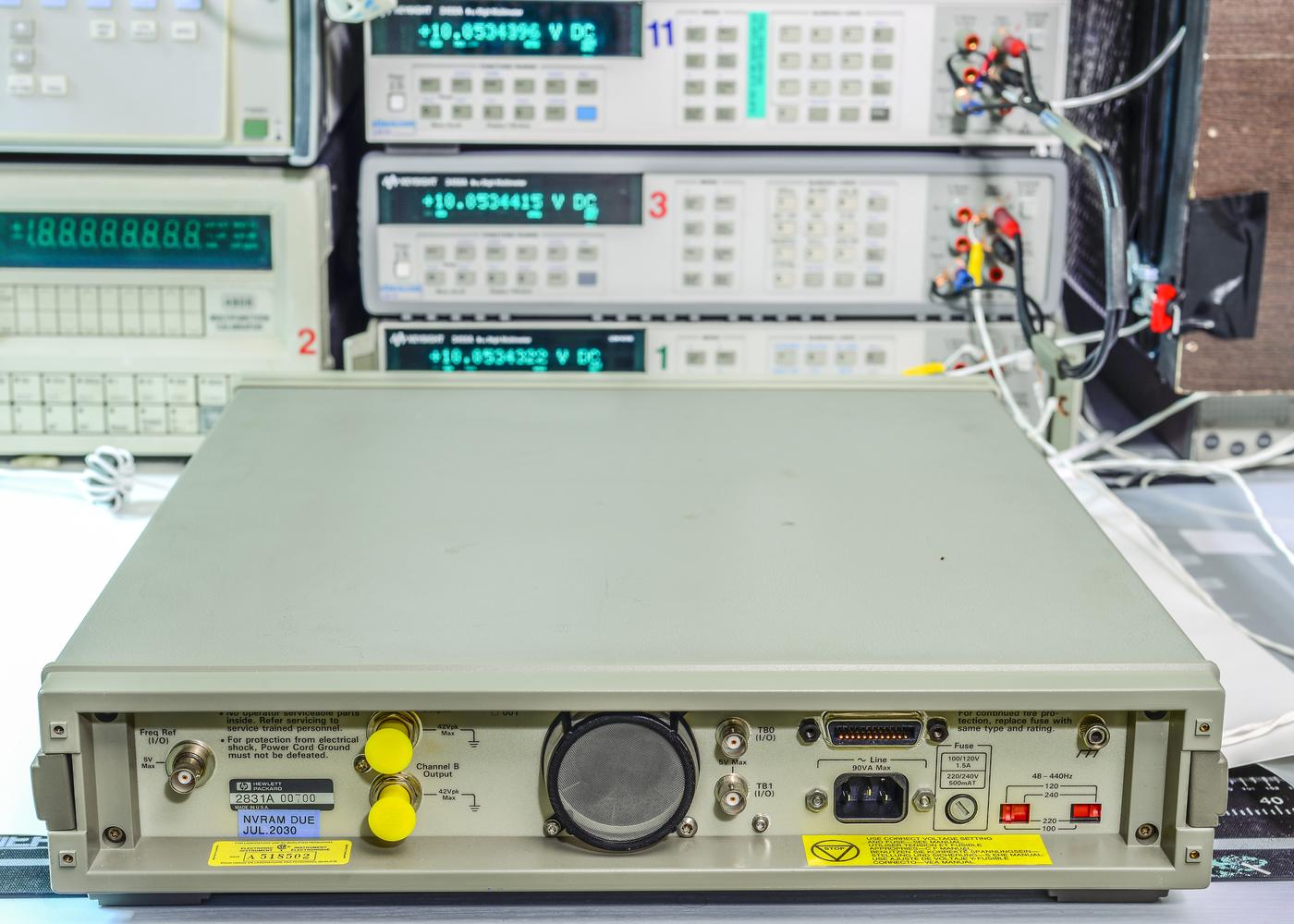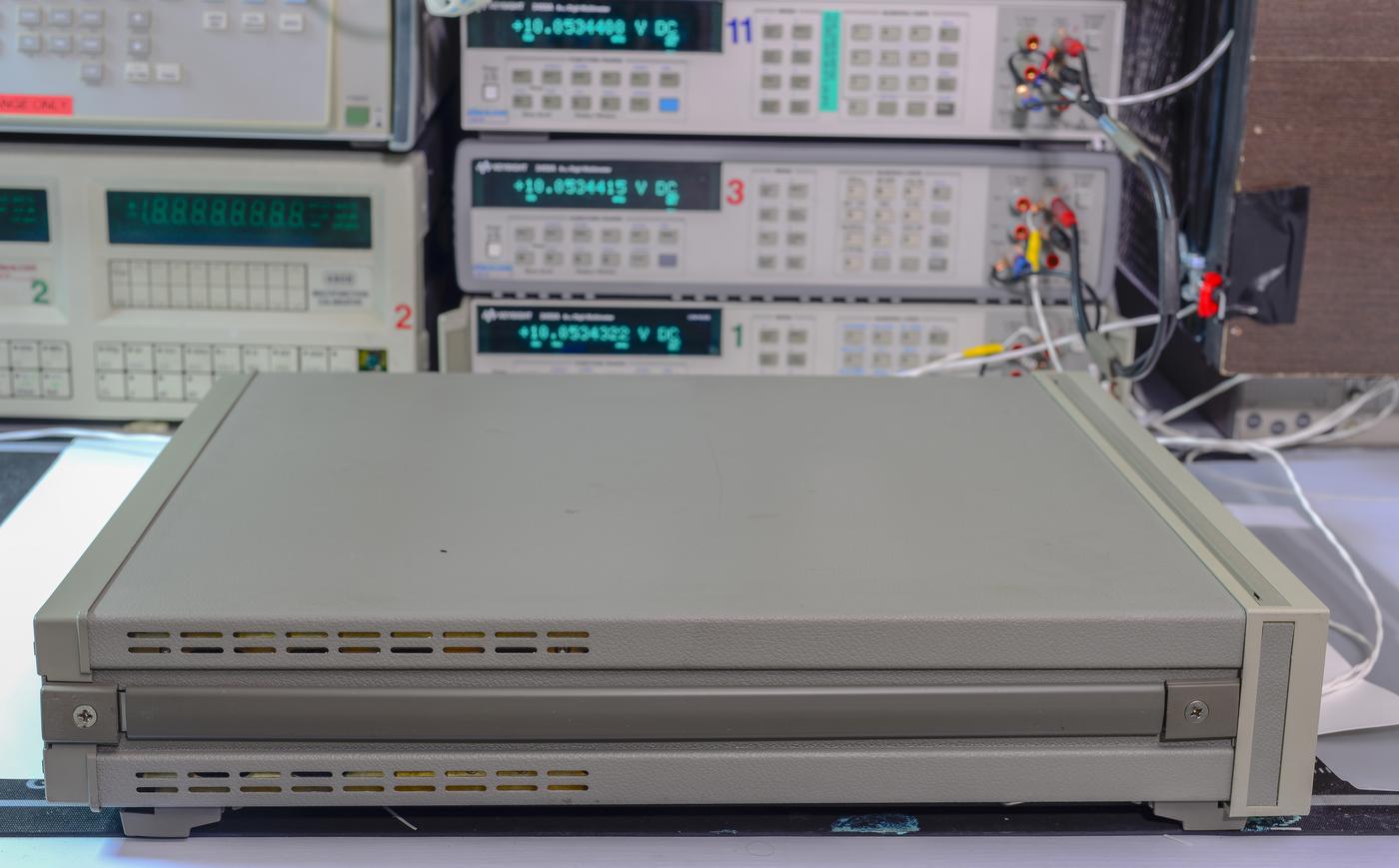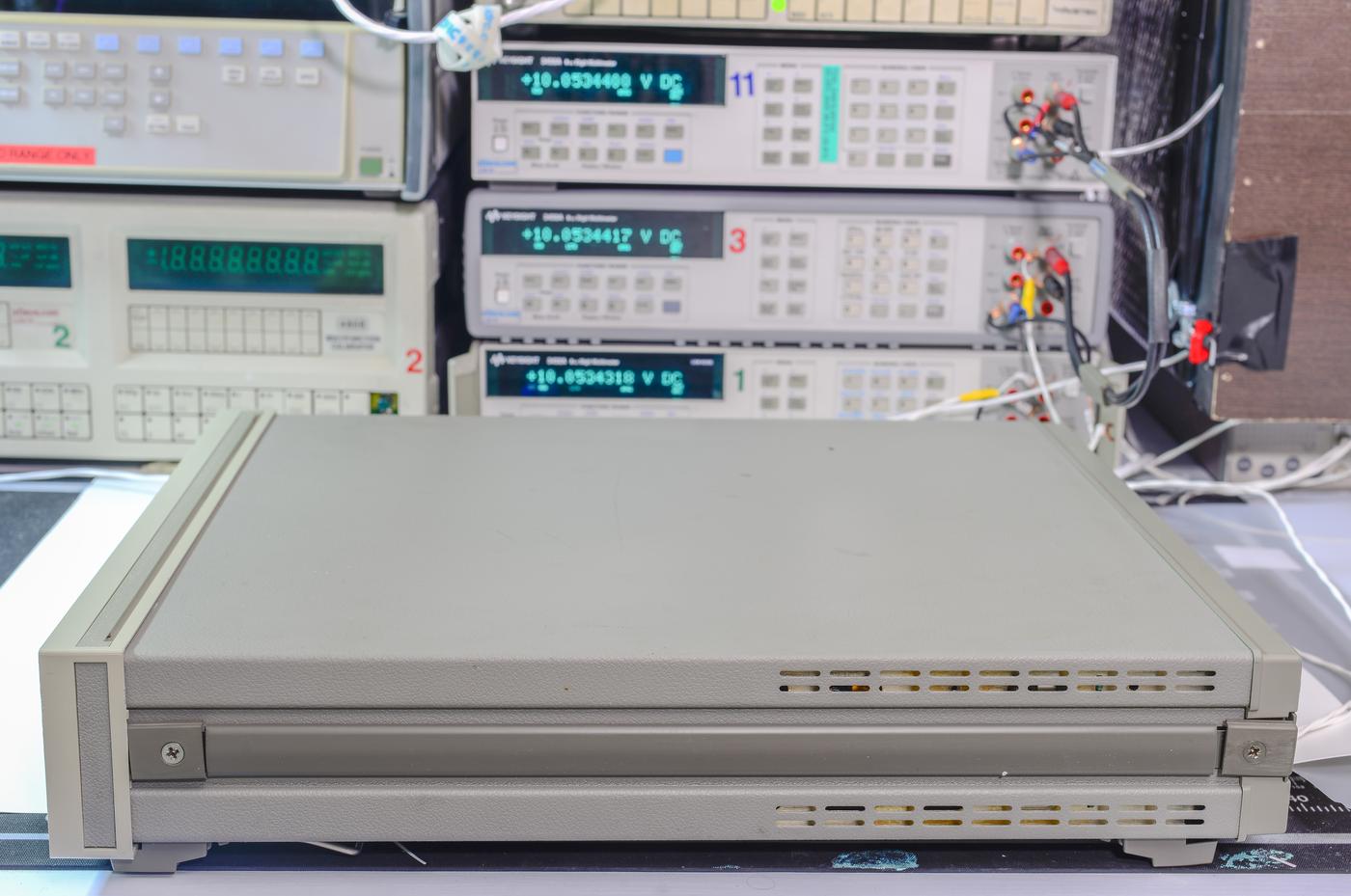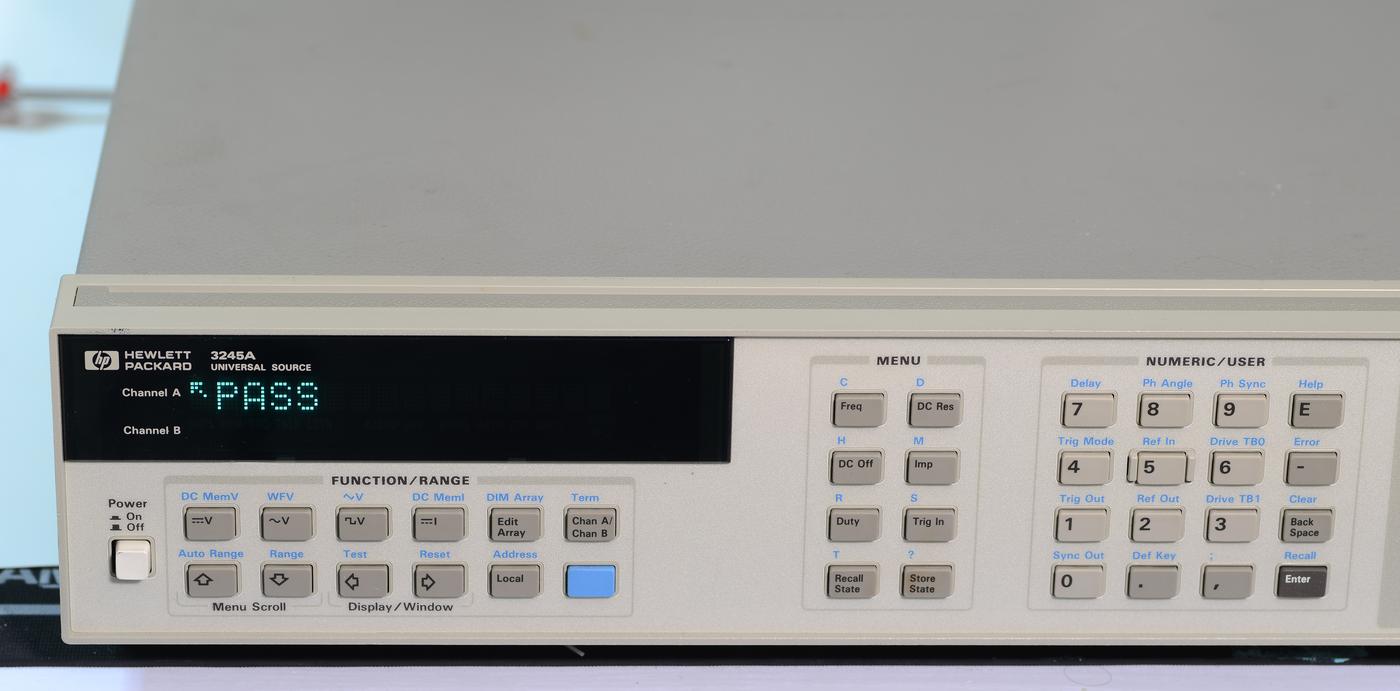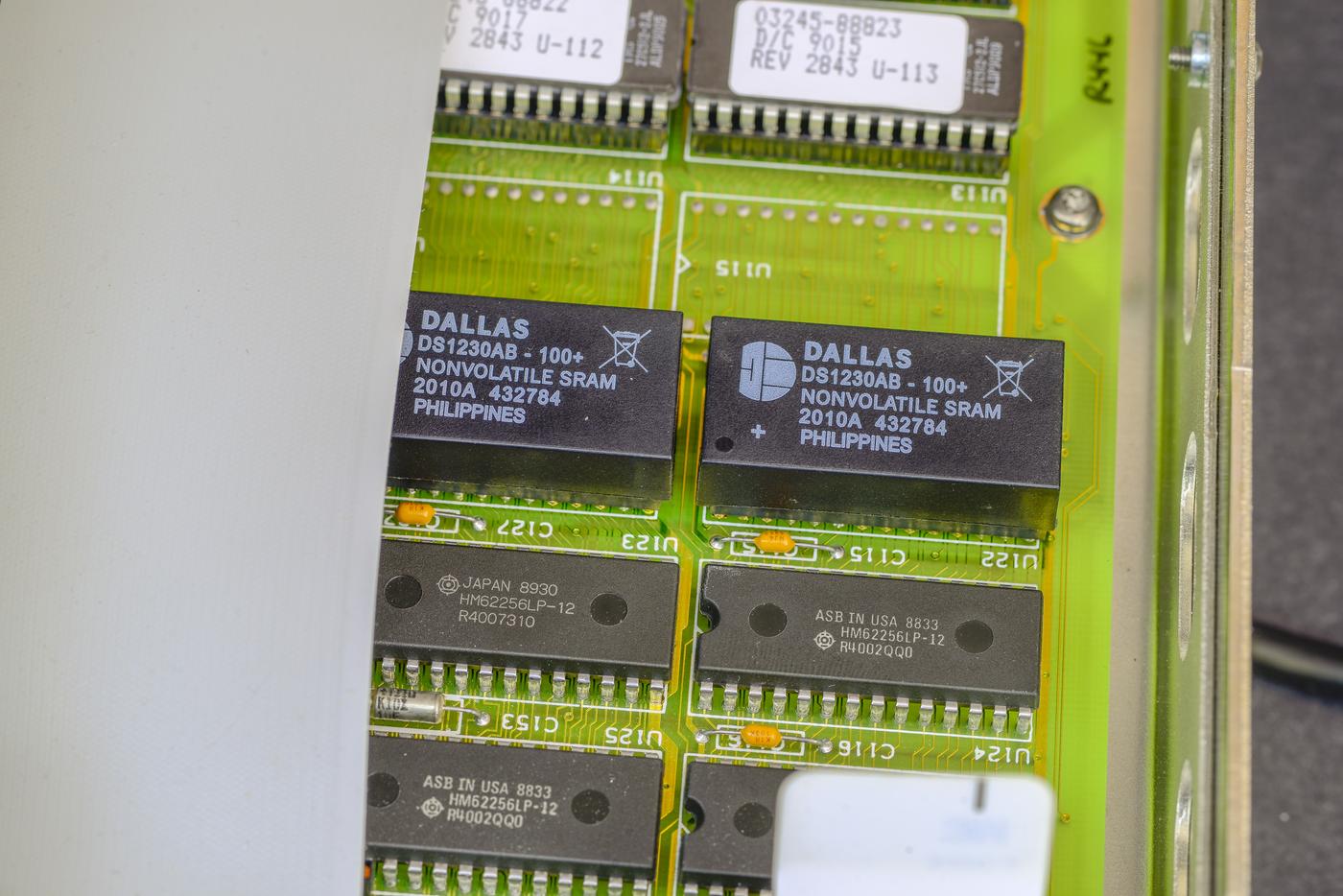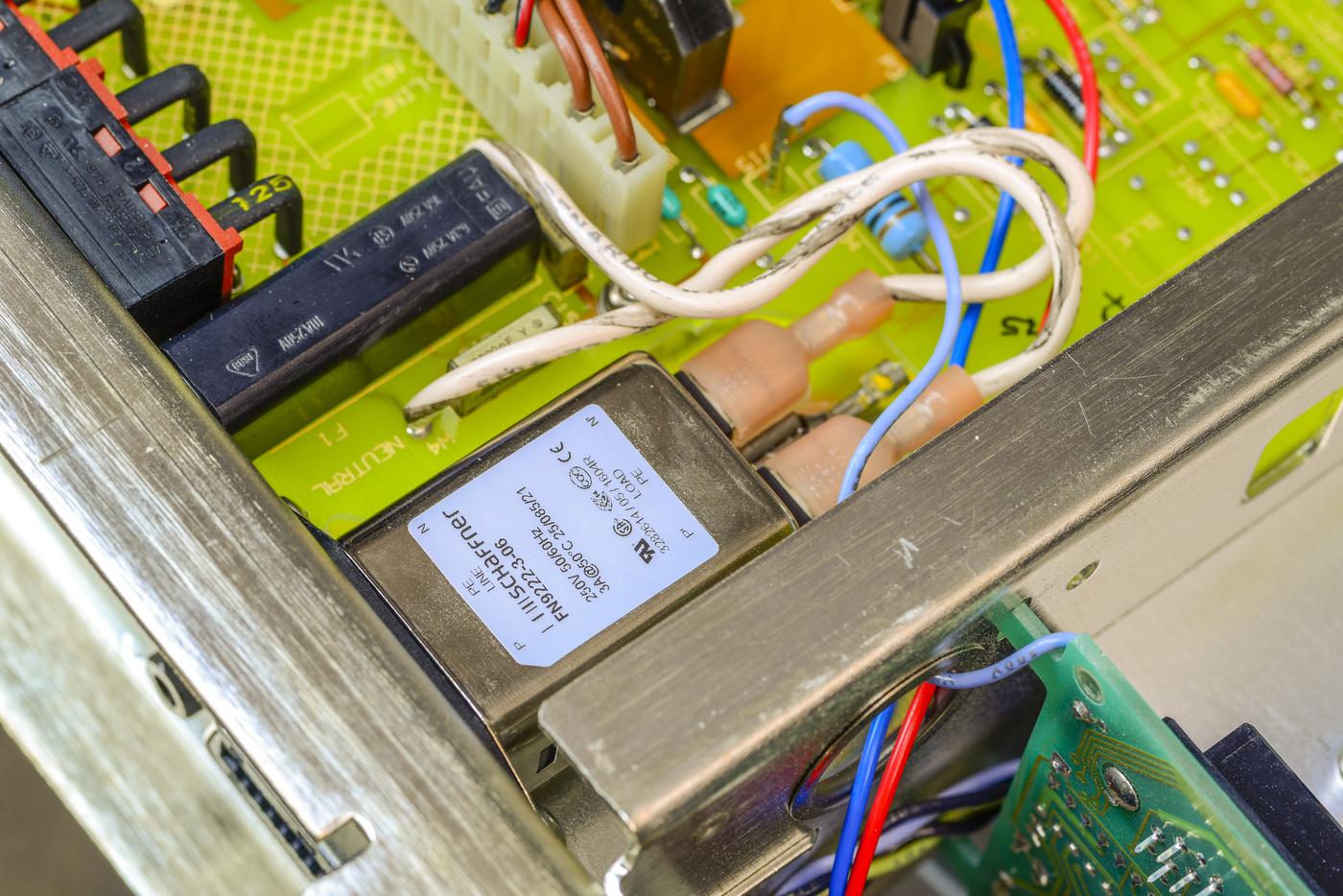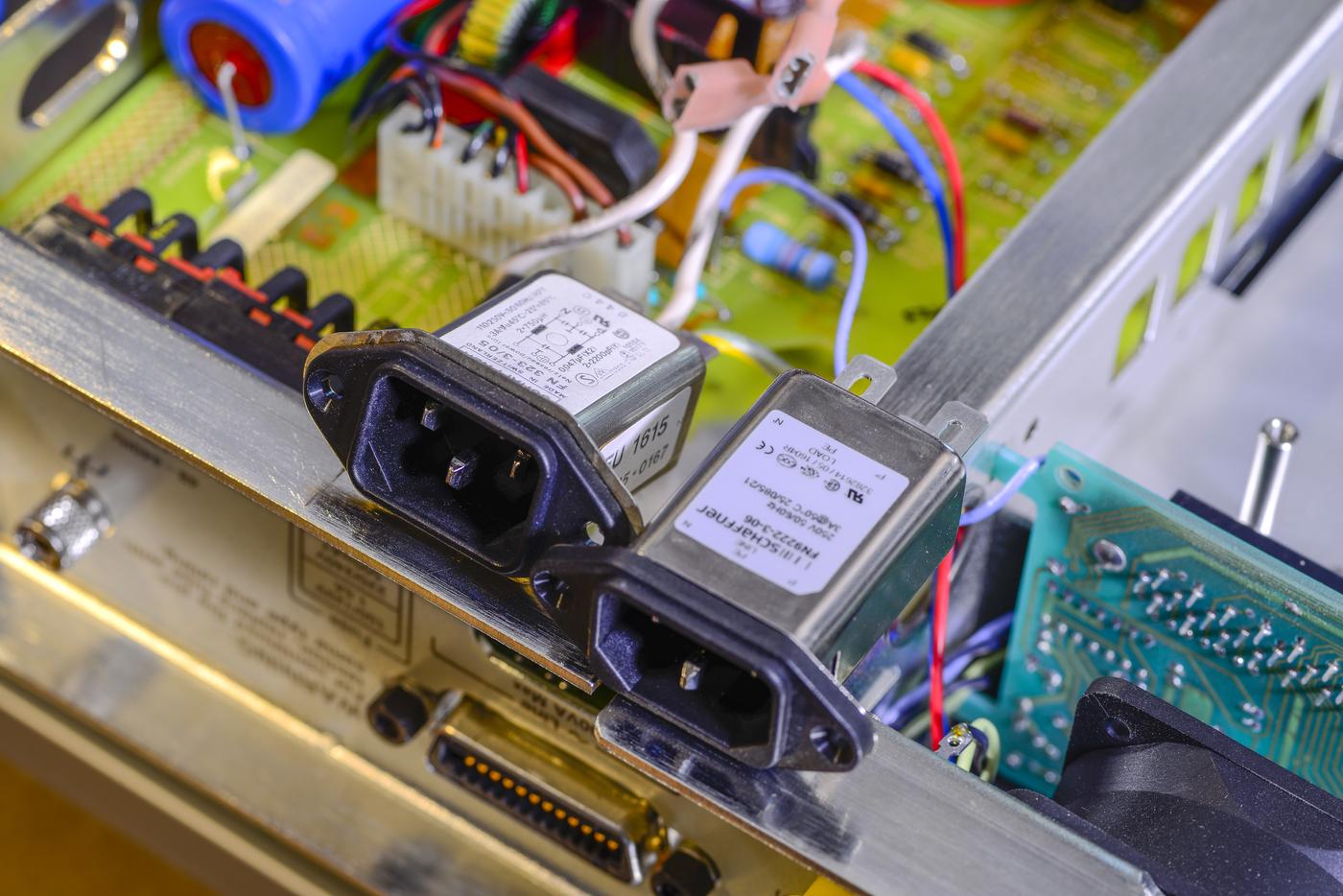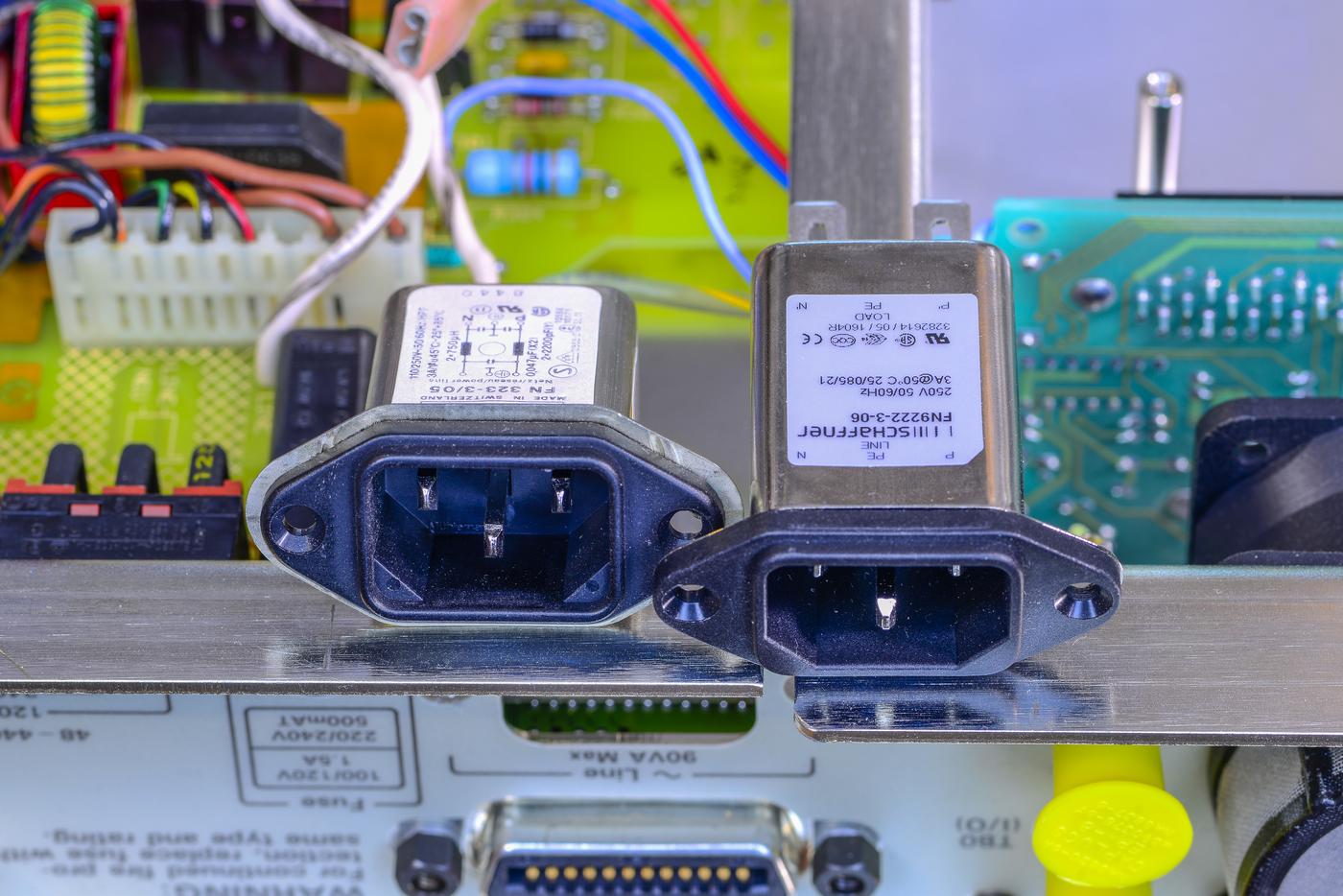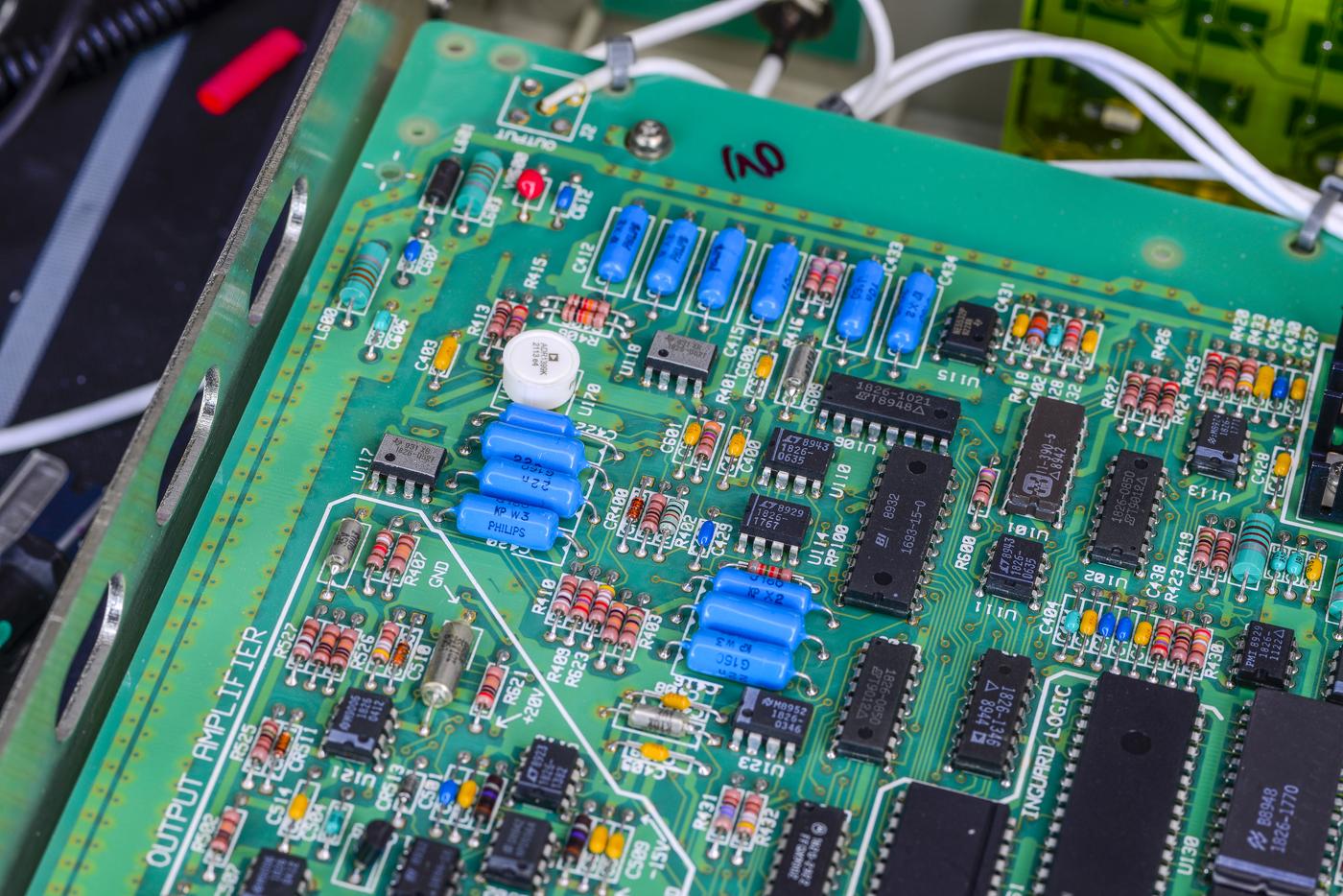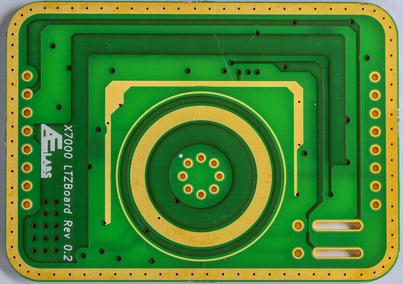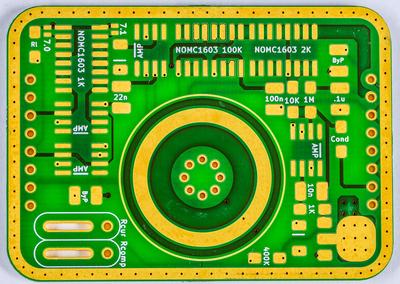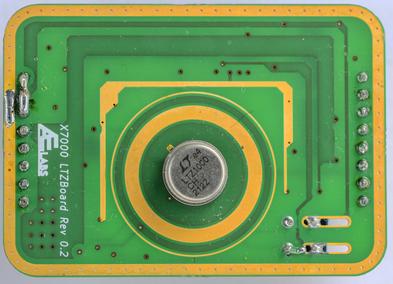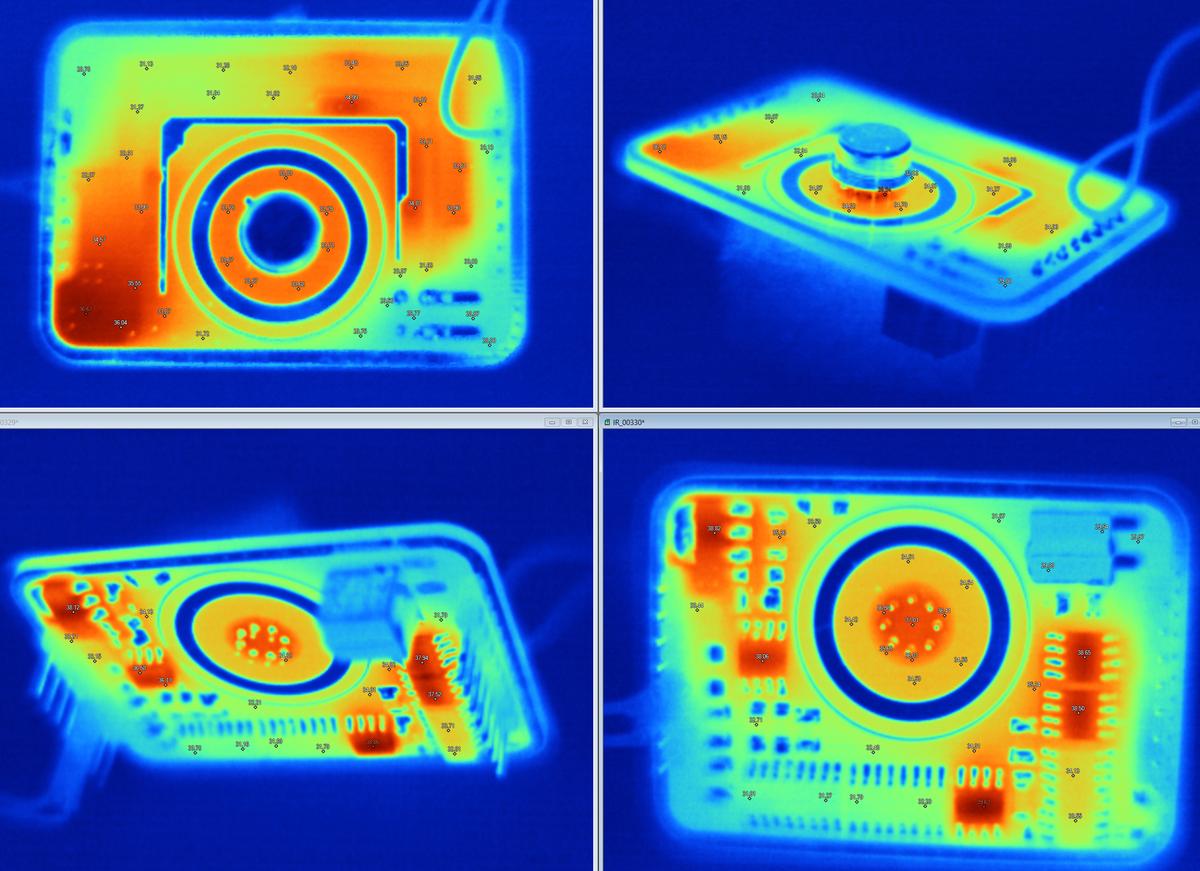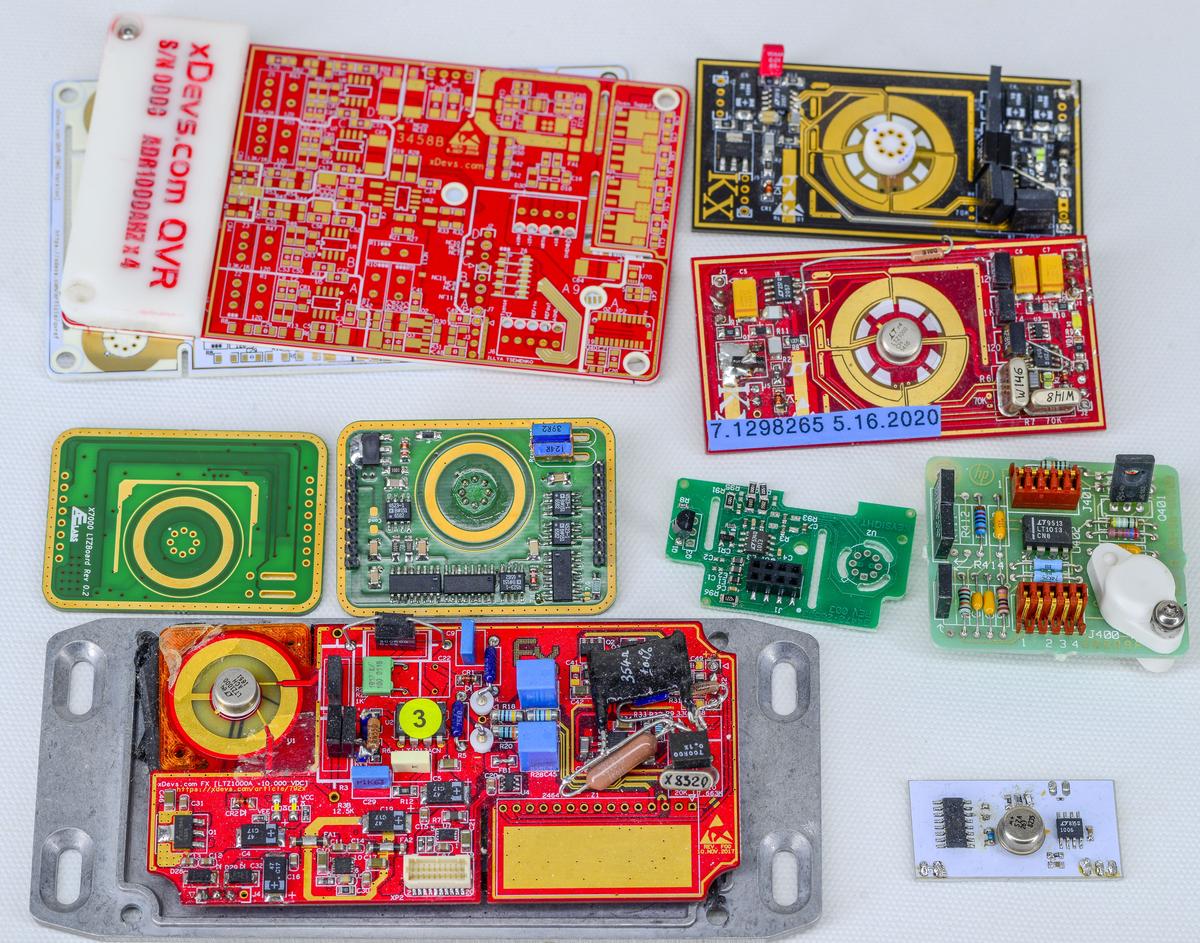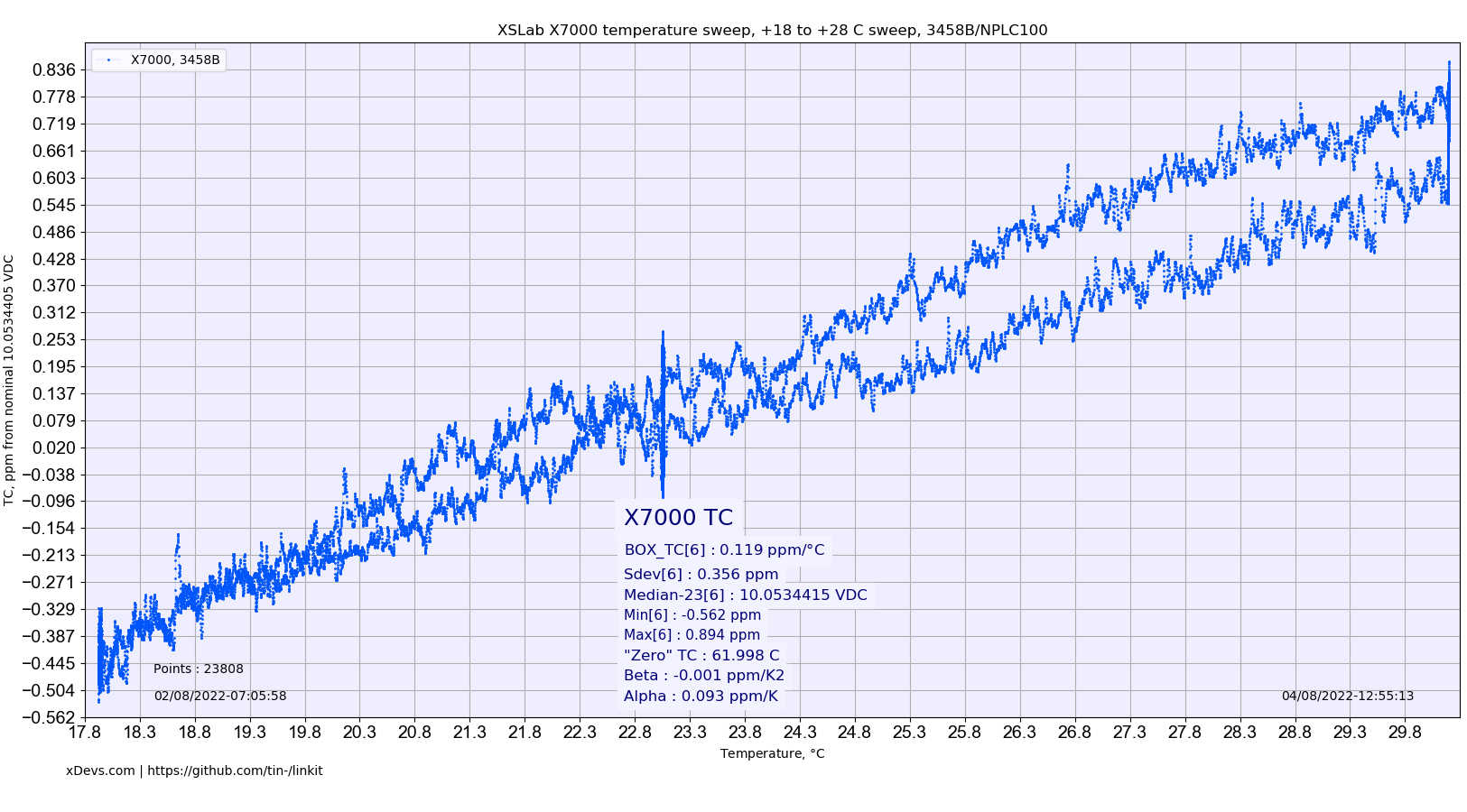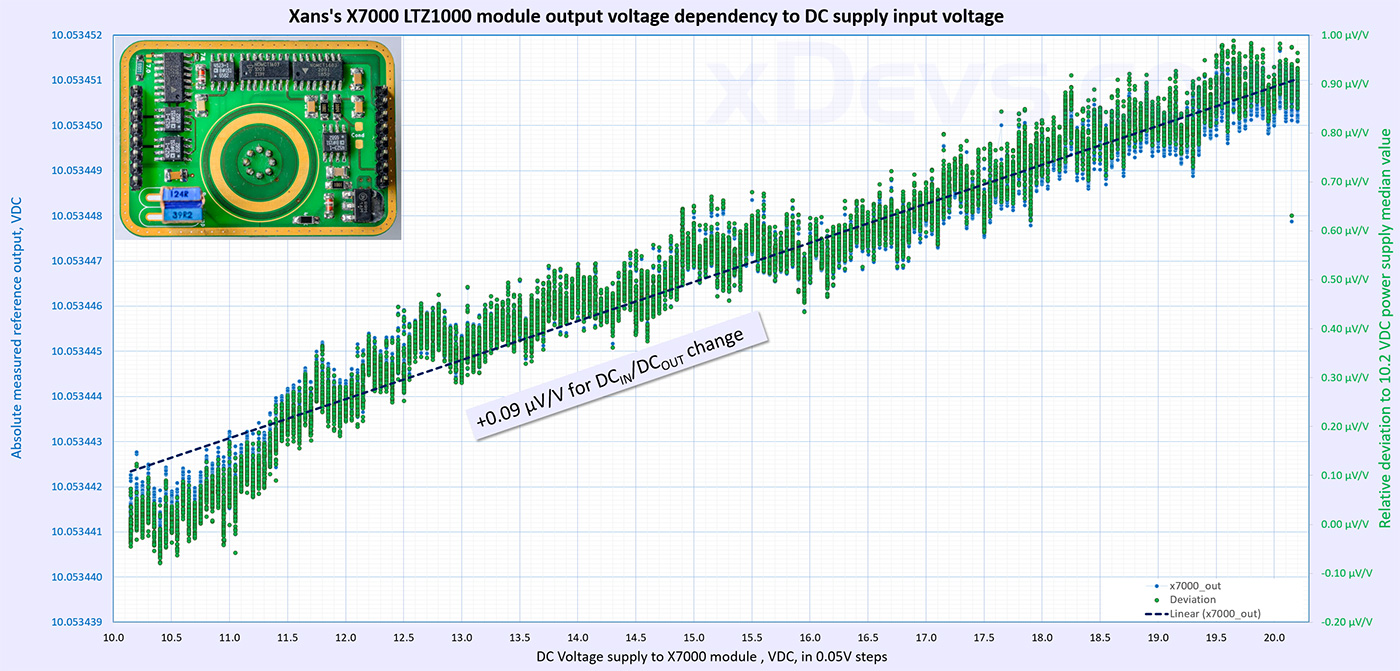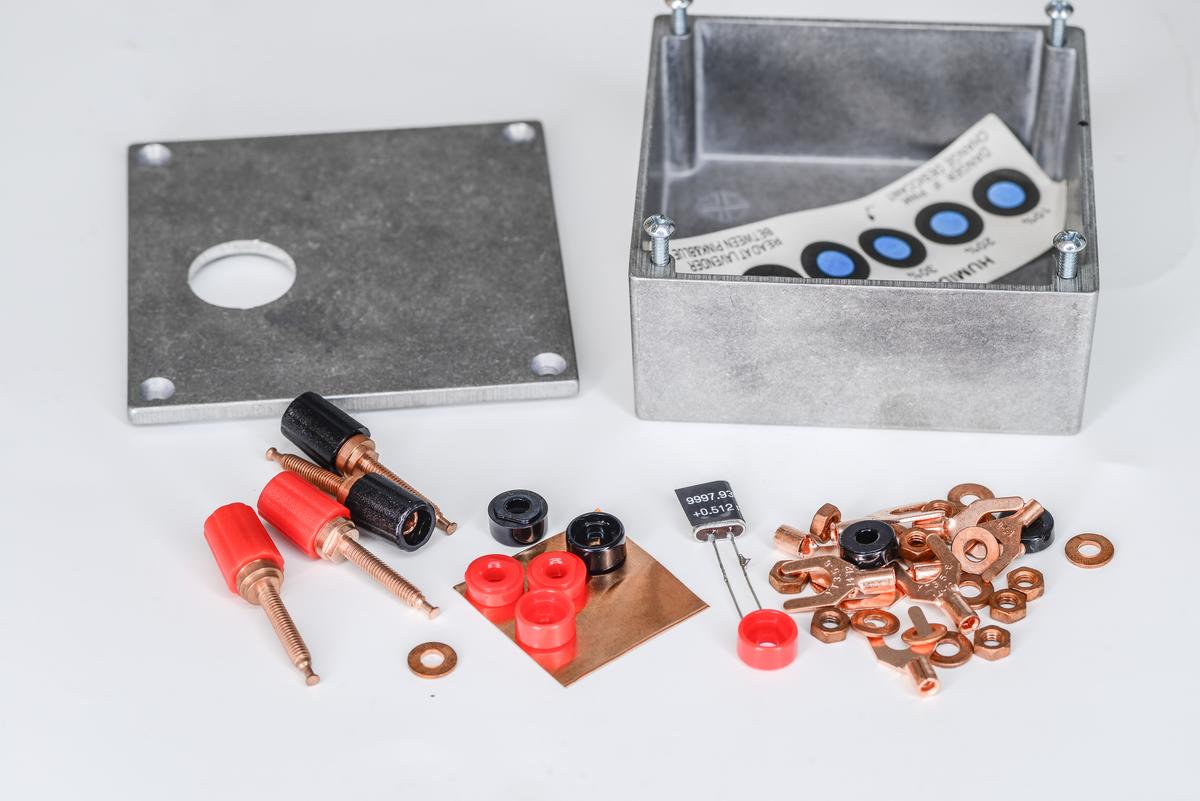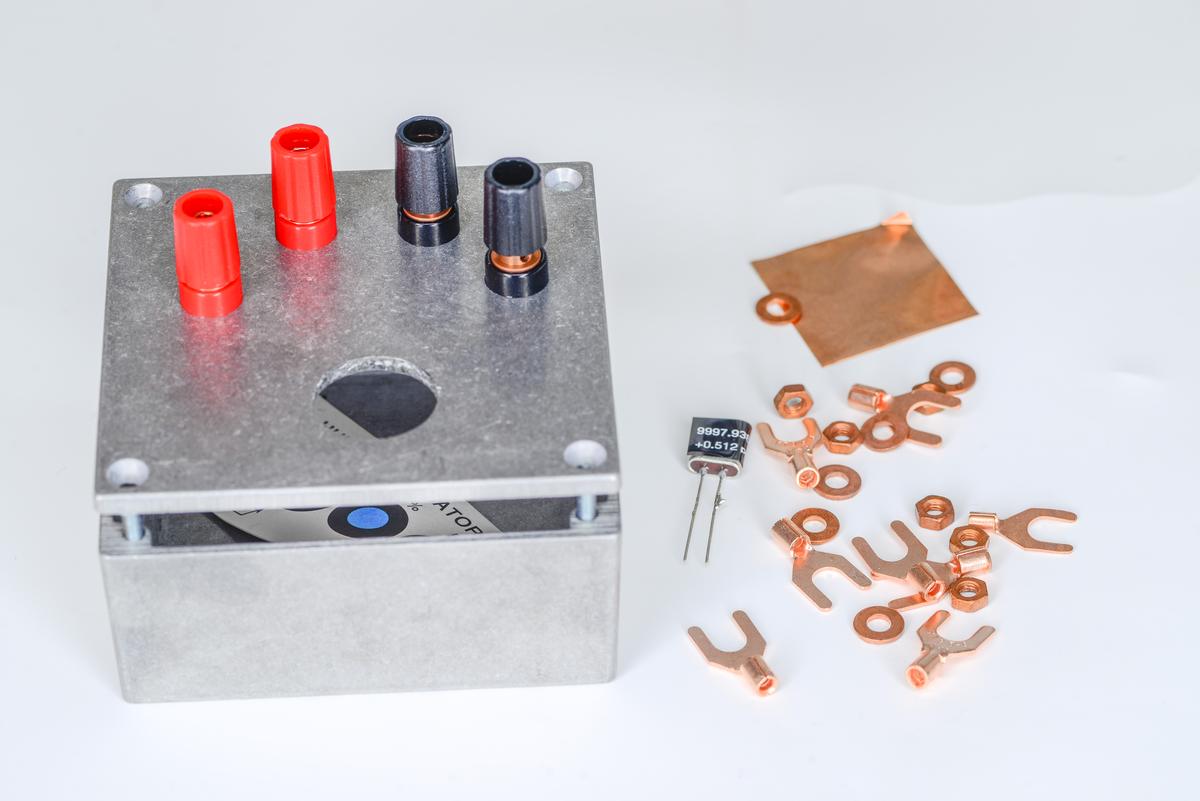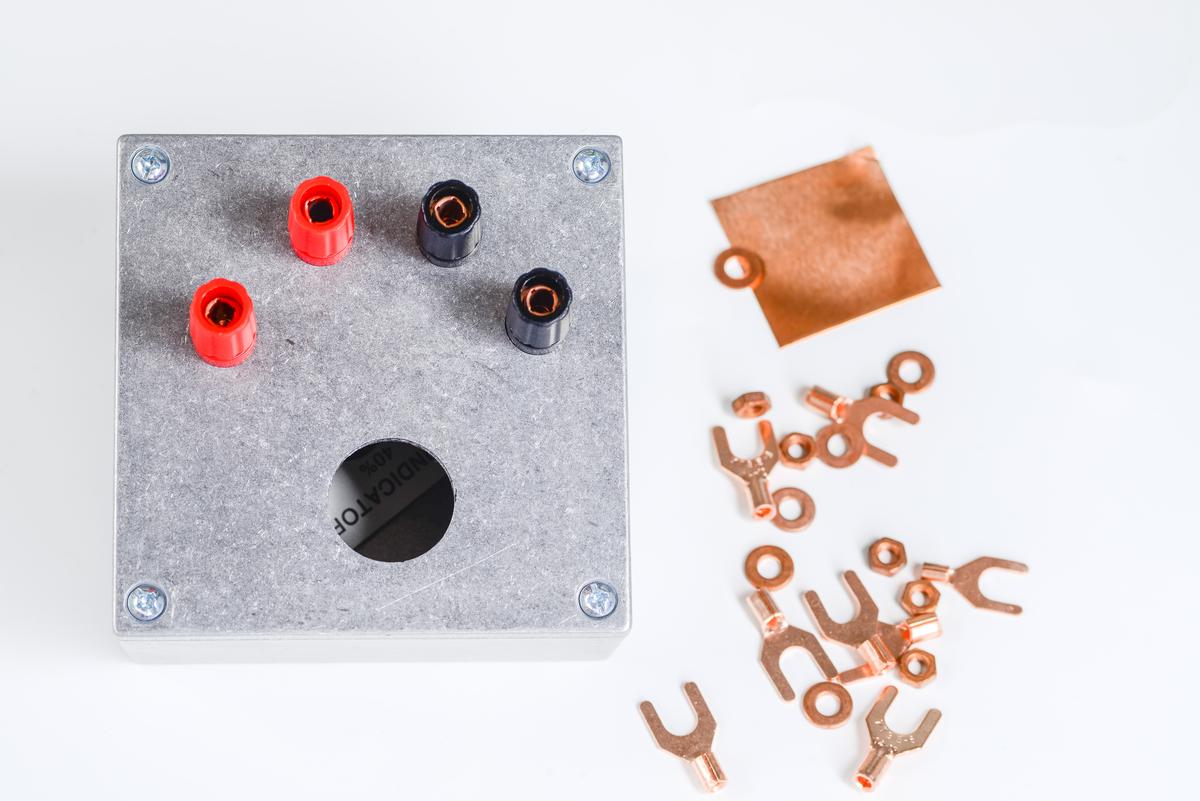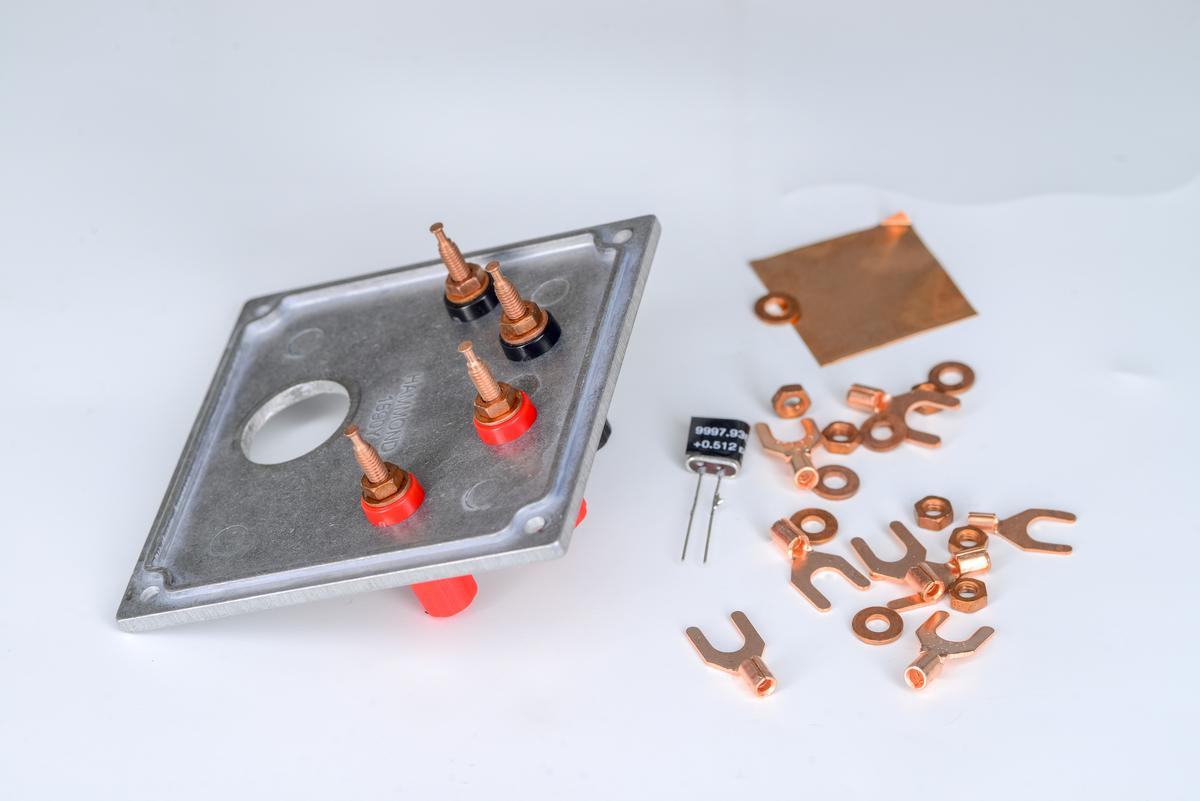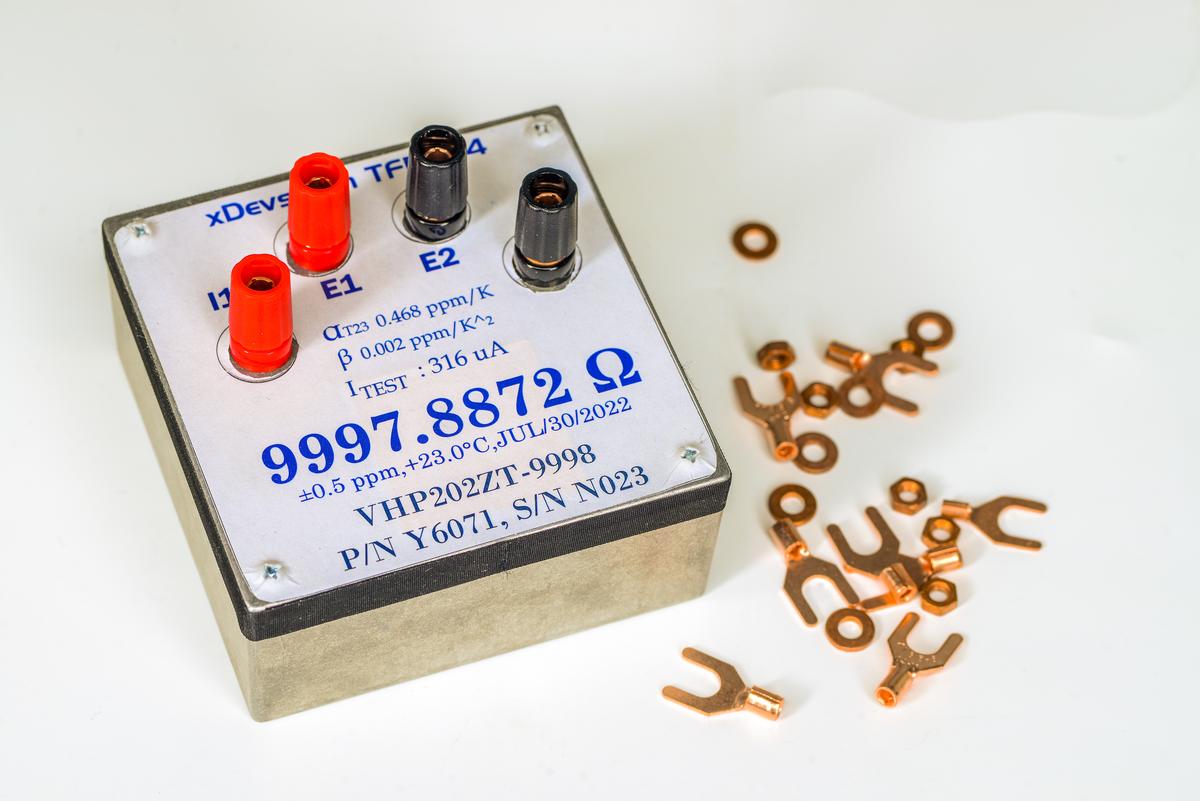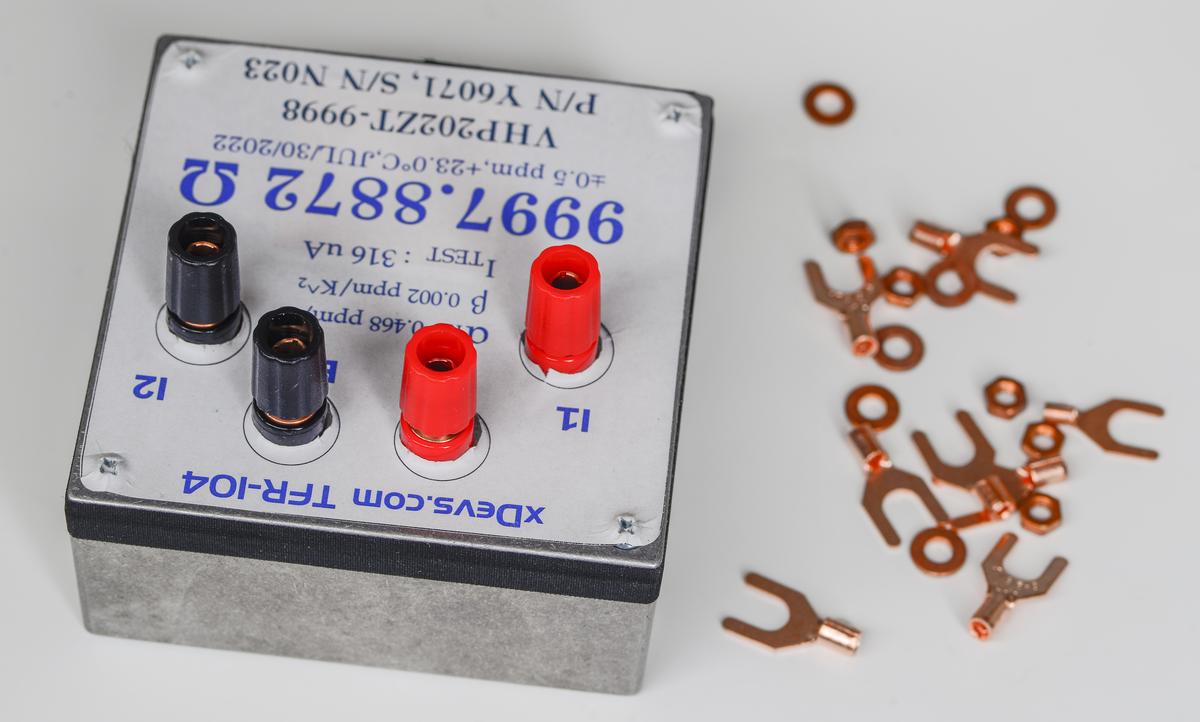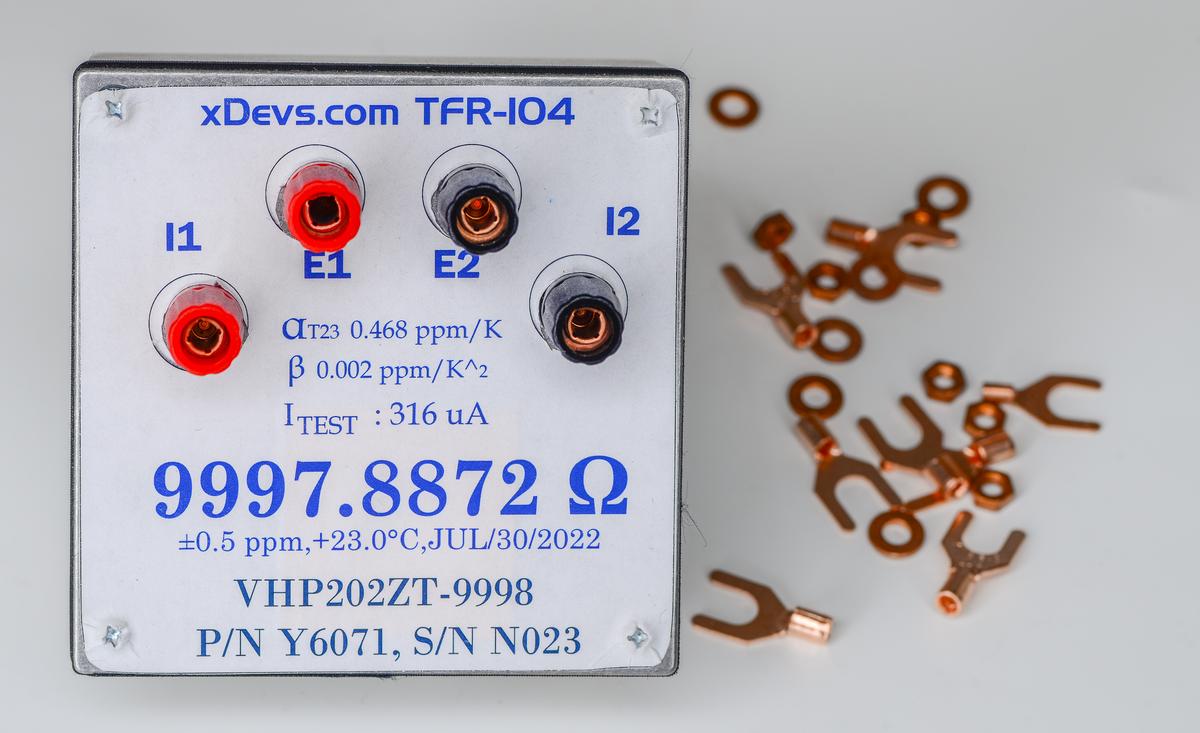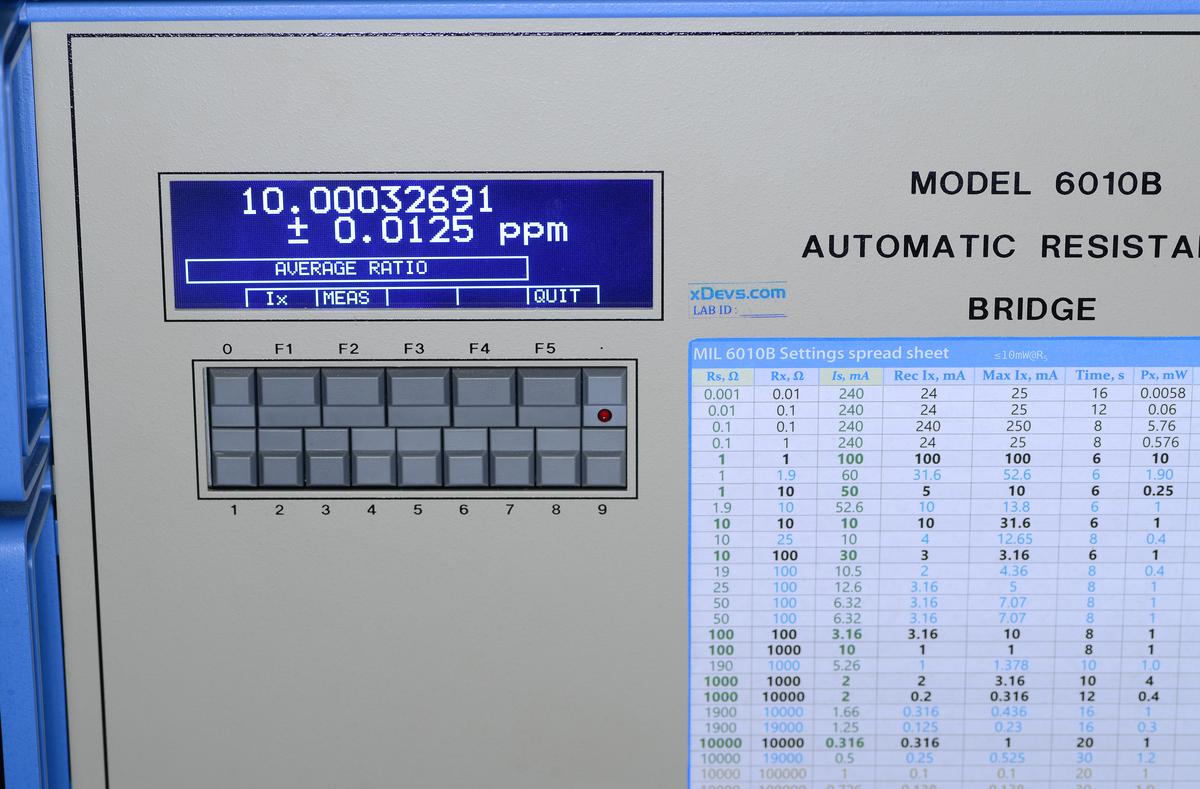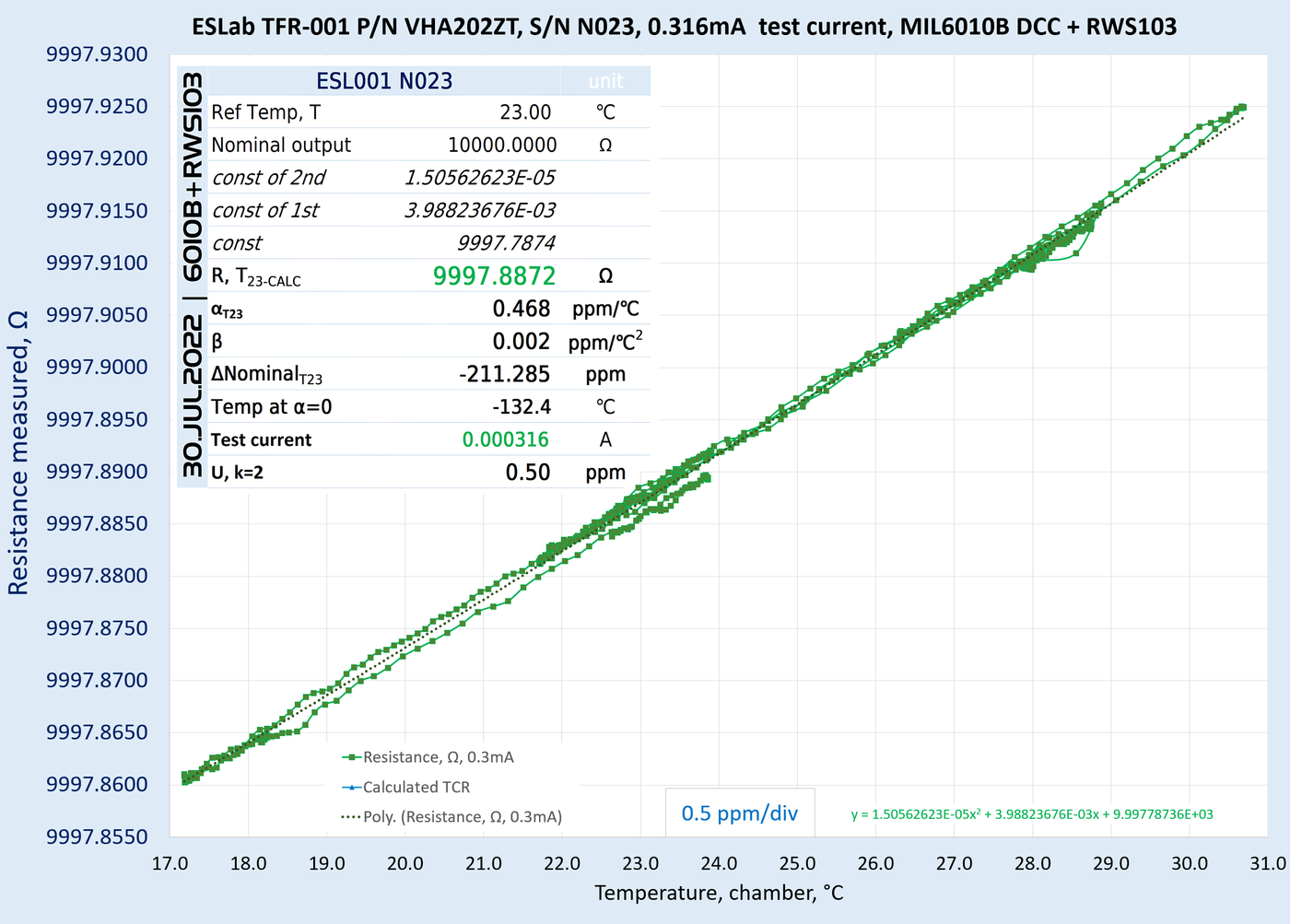- Participants attending CalFest 2022 meetup
- Few notes on CalFest event profile
- Automated DC voltage bank array scan and comparisons
- External calibrations for CalFest 2022 standards and certificate reports
- Day 1 – initial setup and warming up, intro to xDevs NJ labs.
- Resistance comparisons for LC special guest lab
- Calibration for Keithley 2001 for guest MK lab
- AE-Lab’s X7000 LTZ1000CH-based reference module evaluation
- DIY 10 kΩ travel resistance standard
- HP3245A modification and initial calibration for Ian Johnston lab
Calibration festival is unofficial offline event here at xDevs, dedicated to bring together passionate people about science of measurements – metrology. Festival main purpose is to share the costs of high level calibrations for electrical units such as SI Volt and Ohm into our hobby labs and personal equipment, as well as showcase what is possible to achieve for metrology applications with limited budgets outside of any commercial application.
One of the main inspiration sources – inter-lab comparisons performed on the level of NMI and reports published on BIPM KCDB. Idea is to replicate similar approach but at much lower hobby-level personal budget and scale. None of us is able to cover running full-featured measurement laboratory or establish direct realization of SI unit at quantum level, but teamed up together we can hopefully get pretty close to the top of the uncertainty pyramid in specific measurement points and capabilities.
Participants attending CalFest 2022 meetup
CF2022 main meeting event was held offline in NJ, USA location during 10 July, 2022 – 21 July, 2022. However, preparation for experiments and measurements with equipment dedicated for event began as early as February 2022 and completed only by the December 2022. Most of the experiments were automated with Raspberry Pi and Python applications to allow execution in parallel and reduce risk of human-induced errors in data. Writing down numbers on a paper would be a huge waste of time for the meetup like this.
Automation was handled by compact single-board computer Raspberry Pi with communications to equipment over GPIB and Ethernet interfaces. Open software used for most of the experiments, mostly written in Python language. Key tools are internal use xDevs CalKit package, as well as free and publicly available xDevs TECkit package. All experiments results were recorded in CSV-type RAW data files and further processed by various analysis packages or simply Excel. In-house analysis Python apps and licensed commercial MIL 6000B software was used for high resistance measurements with MIL 6000A bridge system.
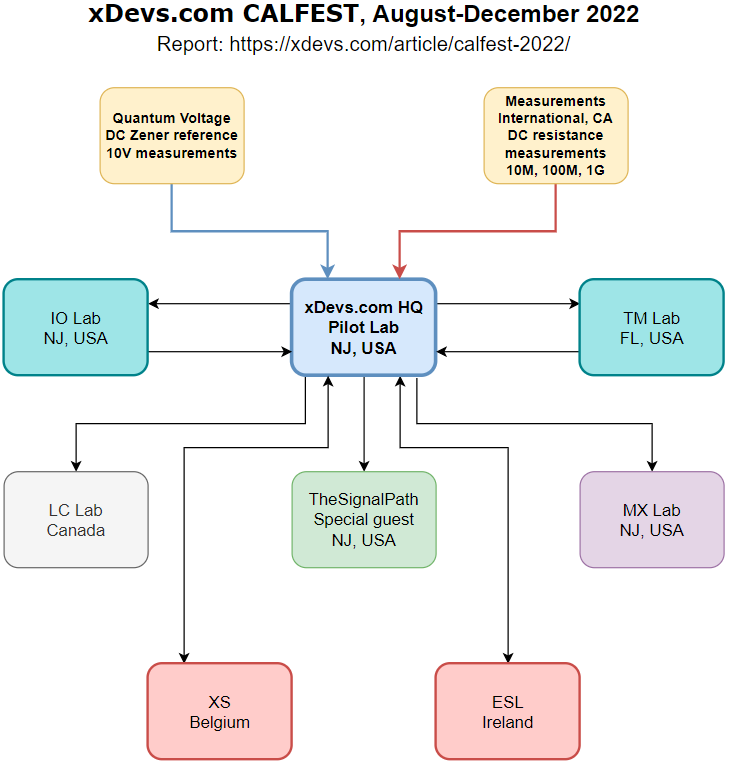
Main CalFest members
- TiN (pilot xDevs lab)
- IO (NJ Lab)
- TM (FL Lab)
Special guests and visiting members during CF2022
This year CF also invited select guests to further extend usability of performed transfers and aid community with improved measurement capabilities. These visiting members are:
- LC (Canada)
- MK (NJ, USA)
- TheSignalPath (NJ, USA)
- XS AE Labs, online only (EU)
- ES, online only (EU)
During this CalFest meetup multiple experiments were performed:
- DC Voltage standards comparison and SI unit calibration link at 10V
- 8½-digit Datron 1281 DMM calibration and adjustment
- 7½-digit HP 3457A DMM calibration and adjustment
- 7½-digit Keithley 2001 DMM calibration and adjustment
- 7½-digit HP 34420A nanovoltmeter calibration and adjustment
- 6½-digit HP 3245A universal source calibration and adjustment for TheSignalPath
- 6½-digit HP 3245A universal source mod, calibration and adjustment for IanJ
- Performance verification and adjustment of 7½-digit DC calibrator Fluke 5440B
- Performance verification of X7000 LTZ1000-based reference core
- TCR verification and calibration of the VPG VHA518-11Z 10 kΩ resistance unit
- Intercomparison with 10 kΩ travel resistance standard
- Calibration of 1 Ω and 10 kΩ Fluke 742A standards
- Calibration of 100 kΩ – 1 GΩ fixed point resistance standards
- Troubleshooting of HP RF spectrum analyzer and HPAK 53230A 15 GHz counter with TSP
Few notes on CalFest event profile
Before we continue with metrology deep dive, it is worth to mention few important aspects. xDevs.com’s CalFest is organized by small group of passionate metrology enthusiasts, who are not employed by any calibration or metrology business. All members have not metrology-related day jobs. As result there is only limited time frame and scope of projects to be pursued during and around xDevs CalFest event. We would love to do more, but it’s not realistic in a short time frame.
CF is NOT open to public for various of reasons. Biggest reason is location allowance with just few visiting members to participate in event. This is all done out of pocket, meaning no fancy conference hall venue availability and no marketing or sponsor budgets. Just like with any other xDevs.com publication or research there are no advertisements, no marketing and no endorsement of any kind for metrology and/or engineering equipment. If specific instrument or device is mentioned, it is purely for the clarity and educational purpose and does NOT mean endorsement of that product or application by any of the participants.
Goal is to have CalFests happening in yearly interval, usually dedicated to particular set of standards and calibration activity. Given the scope and interests of the project, it is also limited to high-end instruments and standards only, since we trying to spread the cost and difficulty of single-digit ppm absolute uncertainty level at key measurement capabilities in a non-professional environment. As outcome from these CalFests each event will have publicly accessible report of the performed activities and projects for educational and knowledge sharing purposes. This article as result showcases key projects and measurements done within CalFest in 2022 year.
Calibrating 10V DC Voltage standard to ± 0.3 µV/V uncertainty require whole lot of careful background work, long-term stable conditions, high sensitivity measurement equipment and lot of attention to details in setup and data processing. It is not something that simply happens after few hours of measurements, even if one has magical golden HP3458A DMM. This is also often way more effort than the typical hobby electronics enthusiasts are ready to invest, so people who just want 6½-digit DMM check for factory 1 year specs are not really the target audience of xDevs.com CF. It would be actually both cheaper and MUCH faster to just ship said DMM to nearest commercial calibration lab than try to accommodate such task within xDevs.com CF.
While xDevs.com understands and appreciates the goal of metrology intercomparisons to spread better measurement practices and provide access to lower measurement uncertainty we doing this only as educational research on limited free time available. xDevs.com CF members do NOT pay any fees or money for participation in CF, but members do pay for their own standards to be calibrated at accredited top-end metrology labs and cover own travels/living expenses during CF.
Now, with all above in mind, if you still want to be a part of the next CalFest, feel free to reach out with proposal or ideas at [team]@xdevs.com. Currently participation is limited by geography to the USA, Canada and EU/UK for logistic reasons. Dipl.-Ing. André “branadic” Bülau is also organized number of successful metrology meetups and events in past years, such as MM2020, MM 2021 and MM 2022 in Stuttgart, Germany. These were limited to EU geography. You can reach out to André at xDevs.com IRC usually during GMT time zone.
If you are high-end calibration laboratory or NMI and would like to support next CalFest event concept by presenting current metrology research or doing measurements on our electrical standards, it could also be a very interesting collaboration. Please feel free to reach out to us here for such idea.
Automated DC voltage bank array scan and comparisons
Life is simple when lab has just one “golden” reference standard. Ideally such standard would be verified and calibrated on periodic basis. It can be commercial standard such as Fluke 732 or Datron 4910, or self-made LTZ1000-based board. Calibrations sequence and history on particular artifact standard can provide historical trend data of reference long-term (months, years) stability, which further give better confidence and can lower lab uncertainties for metrology applications and tasks in DC voltage measurement field.
Similar situation also valid when there are two or three standards. Second standard can be used as transport and daily working unit, while golden unit sits in nice environment controlled lab and have only baby-gloves care once under full moon. This reduce risk of loosing precious ppms and can help to reduce long term drift.
But what if we got larger number of high-end reference standards, say over four units? How can we analyze and have quantitative measurement data and knowledge about performance of each standard? Big names in metrology and test equipment industry have lab shelves filled with arrays of the Fluke 732A and Fluke 732Bs, all monitored by proprietary tools to give statistical data on every single unit.
Ultimately today unit of voltage is realized by Quantum Voltage Standard, such as Josephson Junction Array system like NIST SRI 6000 or similar but these instruments continue to be available only in big laboratories and NMI level organizations. They need continuous supply of expensive liquid helium coolant or usage of high-power (4-8kW) precision multi-stage cryocoolers that need frequent maintenance and qualified operators. These constrains limiting even for national level laboratories, which often operate JVS setup only few times a year to obtain calibration and transfer “fresh quantum volt” into the zener-based room temperature standards arrays. All other time of the year lab would be doing services and metrology work relying on low, yet measurable drift and added noise of the conventional zener standards, such as Fluke 732 series. If uncertainty at level below 1 µV/V is required then it results in careful and tedious analysis and characterization of said zener arrays and DUTs.
Internally at xDevs we arrived at voltage stability and complicated analysis problem already back in 2016 during first CalFest. Different solutions and approaches were tested in practice since then. One of very good solutions was acquisition of the specialized low thermal scanner, such as Dataproof 160 or 320 and measuring each DC Voltage reference one by one with some high-end long scale multimeter, such as Keysight 3458A or Datron 1281. But this method is prone to errors and would depend on linearity, noise and temperature stability of DMM.
Even better approach is to perform the more direct comparison of voltage differential in opposition between two different DC standards. This significantly reduced requirements for DVM performance and even lower-end 6½-digit instruments such as HP 34401A used in lowest 100mV range can be used now to obtain sub-ppm uncertainty. But best instrument for this task is often sensitive nanovoltmeter which can easily resolve even fractions of microvolt between loosely matched 10 V outputs of various standards. 1 µV of 10V equals 0.1 ppm, and nanovoltmeter like Keithley 2182A or Keysight 34420A have own noise floor way below 0.1 µV. Given internal zener reference noise at level around ~1 µV such comparison method is well suited for detecting even minute changes in output voltage EMF with best uncertainty. This method is also what Fluke recommends to perform calibration of their own 732B/C standards nowadays. In fact even in Josephson Voltage standard system calibration of unknown zener standard is done in very same manner. JVS array +10 V output configured as quantum-accurate noiseless level and connected in opposite to the compared zener, with commercial nanovoltmeter like HP 34420A measuring difference in nanovolts.
10.1109/19.571846
https://www.eevblog.com/forum/metrology/nbs-430-and-alternative-methods/
External calibrations for CalFest 2022 standards and certificate reports
Calibration certificate for IET SRL100M, 25.JUNE.2022
Calibration certificate for Fluke/xDevs.com FSL935 resistance standard, 26.MARCH.2023
Day 1 – initial setup and warming up, intro to xDevs NJ labs
Upon arrival all members unloaded their equipment at the pilot lab and active instruments were powered up to warm-up and settle at the new location before doing any measurements. Physical condition of each instrument was inspected to ensure good health and readyness.
Array to measure zener standards and 10V sources was configured around Dataproof 160A and Keithley 2182A nanovoltmeter. JVS-referenced Datron 4910 was used as a primary transfer standard for freshiest DC voltage uncertainty. This standard feature four independent LTZ1000A-based output cells and verified to be stable within ±0.3 µV/V over long term prior to CalFest event.
Calibrators and long-scale reference DMMs such as HP3458A are always on at the pilot xDevs.com lab, so no warmup was required to begin experiments. DUT DMMs and instruments were connected to the GPIB bus in the lab for automation and interfacing. Both HP3458A DMM and Fluke 5720A MFCs were calibrated within 30 days prior to actual measurements at CF2022.
Resistance standards are often have noticeable temperature coefficient and require precise and stable environment. To provide this pilot xDevs.com has few DIY TEC-based airbath chambers that we built and explained in other articles, such as this one. Large airbath chamber provide programmable isothermal environment with standard metrology temperature at +23.0 °C. Tested stability of passive standards in the chamber is around ±0.1 °C over idefinite period thanks to active PID-controller operation.
LC hand-carried his equipment to perform transfers at pilot lab. His equipment list summary shown below:
- Fluke 5440B DC Voltage calibrator
- Fluke 742A 1 Ω resistance standard, S/N 7791006
- Fluke 742A 10 kΩ resistance standard, S/N 7815007
- Fluke 742A 10 kΩ resistance standard, S/N 7633009
- Custom-built resistance reference based around VPG VHA518-11Z with PMO.
- Datron 1281 8½-digit DMM
Resistance comparisons for LC special guest lab
https://xdevs.com/mi6010bfs_test4_tcrs_rx_xduck_0.316mA_rs_mmg9330_3.16mA_16s_3458a_lc742a_10k_jun2022_cf/
https://xdevs.com/mi6010bfs_test4_tcrs_rx_lcvha_10k_0.316mA_rs_mmg9330_3.16mA_16s_3458a_fsl935_10k_jun2022_cf/
https://xdevs.com/mi6010bfs_test4_tcrs_rx_lc742a_1_100mA_rs_mmglol_100mA_8s_3458abc_5720b_10v_jul2022/
Fluke 742A 10000 Ω resistance standard, S/N 7815007
First Fluke 742A-10k Ω standard was calibrated during CF2022 against characterized ESI SR104 standard (internal calibration from FEB.2022 with uncertainty 0.15 ppm). Measurement was performed at 0.316 µA current multiple methods, with both MIL 6010B DCC and MIL 6000A high-resistance 9½-digit bridge systems. Both reference standard and DUT 742A-10k were at fixed +23.00 °C temperature after initial warmup and settle period over 24 hours. Omega RTDCAP 3-wire 100 Ω temperature sensor was placed in ESI SR104 thermometer well for accurate temperature data for air-bath stability verification. Fluke 1529 Chub-E4 used to collect temperature data.
Due to limited amount of time during CalFest 2022 detailed TCR study and verification of specified α and β coefficients was not performed.
After measurement cycle this 742A-10k was assigned final value 10000.0480 Ω with uncertainty 0.32 ppm. Date of final calibration is 13.JULY.2022. Because we also have original Fluke factory calibration values at the back of the unit, we can now guesstimate the long-term drift, giving rough assumption of linear resistance change.
Daily DriftRSTD = Current value +4.70 ppm vs factory / Time between current calibration July 2022 and manufacture date 26 April 2001 (7748 days) = +4.70 ppm / 7748 = +0.0006066 ppm/day
By running this simple math we now can estimate annual linear drift +0.0006066 ppm/day * 365 days = +0.221 ppm/year. This is well inside ±4 ppm/year specified in Fluke manual.
Fluke 742A 10000 Ω resistance standard, S/N 7633009
Second Fluke 742A-10k Ω standard was calibrated during CF2022 against characterized ESI SR104 standard (internal calibration from FEB.2022 with uncertainty 0.15 ppm). Measurement was performed at 0.316 µA current multiple methods, with both MIL 6010B DCC and MIL 6000A high-resistance 9½-digit bridge systems. Both reference standard and DUT 742A-10k were at fixed +23.00 °C temperature after initial warmup and settle period over 24 hours. Omega RTDCAP 3-wire 100 Ω temperature sensor was placed in ESI SR104 thermometer well for accurate temperature data for air-bath stability verification. Fluke 1529 Chub-E4 used to collect temperature data.
Due to limited amount of time during CalFest 2022 detailed TCR study and verification of specified α and β coefficients was not performed.
After measurement cycle this 742A-10k was assigned final value 10000.0279 Ω with uncertainty 0.35 ppm. Date of final calibration is 13.JULY.2022. Because we also have original Fluke factory calibration values at the back of the unit, we can now guesstimate the long-term drift, giving rough assumption of linear resistance change.
Daily DriftRSTD = Current value +2.79 ppm vs factory / Time between current calibration July 2022 and manufacture date 5 February 2001 (7828 days) = +2.79 ppm / 7828 = +0.0003564 ppm/day
By running this simple math we now can estimate annual linear drift +0.0003564 ppm/day * 365 days = +0.130 ppm/year. This is also very well inside ±4 ppm/year specified in Fluke manual.
Fluke 742A 1 Ω resistance standard, S/N 7791006
This 742A-1Ω standard was calibrated against accredited Ohm Labs 200 standard (calibration from 1.MAY.2022 with uncertainty ±0.30 ppm). Measurement was performed at nominal 100 mA current using MIL 6010B DCC 9½-digit bridge. Both reference standard and DUT 742A-1 were at fixed +23.00 °C temperature after initial warmup and settle period over 24 hours. Omega RTDCAP 3-wire 100 Ω temperature sensor was placed in Ohm Labs 200 thermometer well for accurate temperature data for air-bath stability verification. Fluke 1529 Chub-E4 used to collect temperature data.
Due to limited amount of time during CalFest 2022 detailed TCR study and verification of specified α and β coefficients was not performed.
After cycle of measurements at 3 different currents (10mA, 50mA and 100mA) this 742A-1 was assigned final value 1.00000568 Ω with uncertainty 0.35 ppm. Date of final calibration is 13.JULY.2022. Because we also have original Fluke factory calibration values at the back of the unit, we can now guesstimate the long-term drift, giving rough assumption of linear resistance change.
Daily DriftRSTD = Current value +6.58 ppm vs factory / Time between current calibration July 2022 and manufacture date 9 May 2001 (7736 days) = +6.58 / 7736 = +0.0008506 ppm/day
By running this simple math we now can estimate annual linear drift +0.0008506 ppm/day * 365 days = +0.3105 ppm/year. This is well inside ±8 ppm/year specified in Fluke instruction manual for Model 742A-1 standards.
Traceability chain for LC resistance standards summary shown on block diagram here.
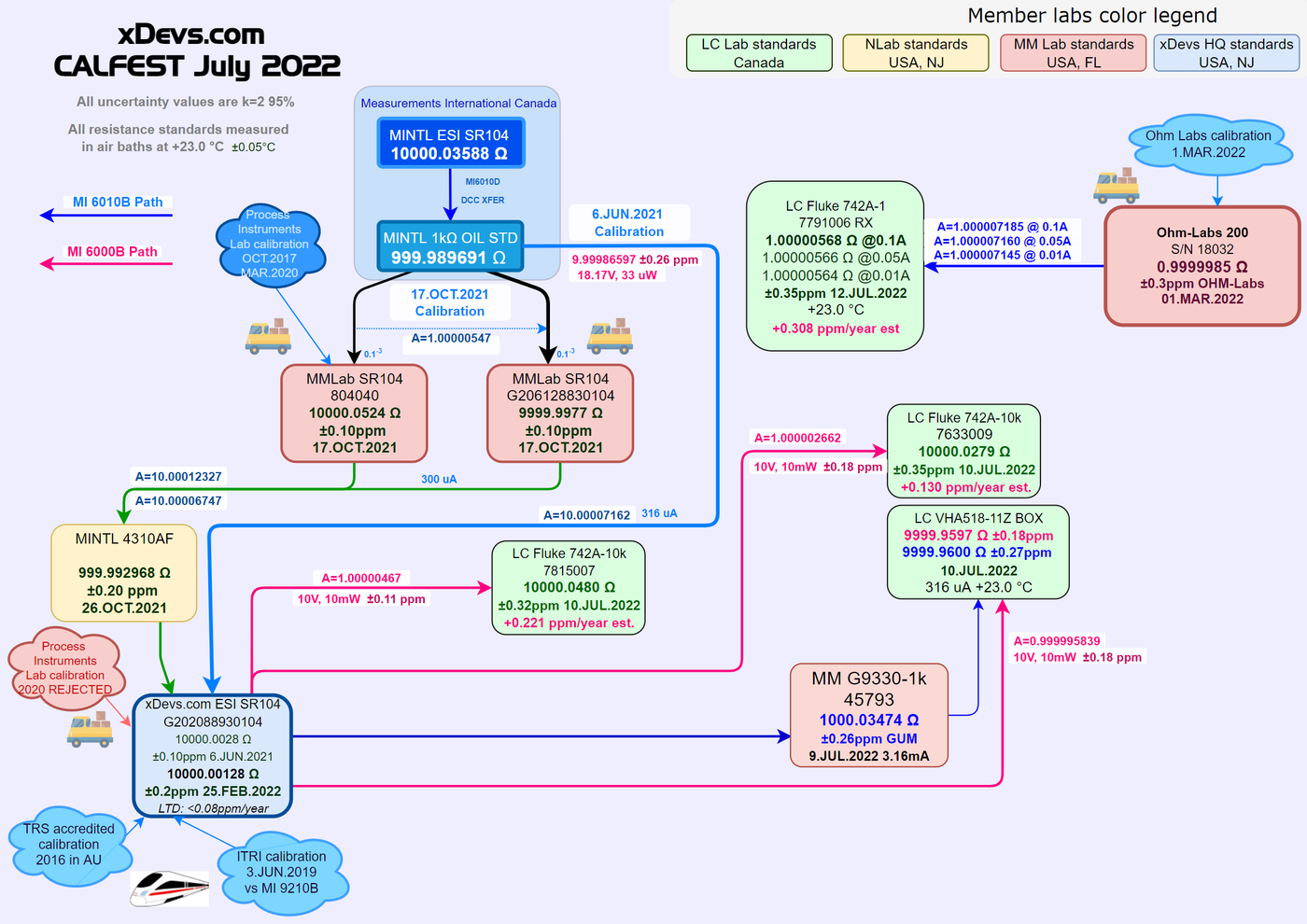
Now these four resistance standard is ready to keep precious 1 Ω and current ppms for LC lab in Canada.
Resistance comparisons for FL Lab.
SVG page 1 — Test XF742 10k to MMG9330 1k thru 4210A scanner
SVG page 2 — Test MMG9330 vs MM742-10k – bare DCC
SVG page 3 — Scan 10 × 1 Ohms RX vs Rs GLOL-B
Measurements International 9331G/100M
Measurements International 9331G/100M datasheet
Higher 1 GΩ resistance standard we got calibrated was manufactured by Ohm Labs. It is series 100 model 109-AF with special silver-plated coaxial BPO-style connectors. This standard is specified with temperature coefficient better than 30 ppm/°C, voltage coefficients less then 0.1 ppm/V and annual stability at 25 ppm. It’s recommended test voltage is 100 V and maximum non-destructive voltage is 10 kV. A 10 KΩ nominal, at 25 °C thermistor is included in case to monitor the internal temperature of the standard.
Calibration for Keithley 2001 for guest MK lab
MK lab contacted xDevs back in April to assist with Keithley 2001 repairs. After replacing ADC CPLD unit started to operate correctly and passed quick self-tests. Further evaluation confirmed good operation of the meter and it was decided to perform full adjustment and calibration of this revived Keithley 2001 DMM during the CalFest 2022 event. Reference 7½-digit multi-function calibrator Fluke 5720A with 5725A amplifier were used to perform adjustments, as per Keithley 2001-905-01 Rev.G repair manual procedures.
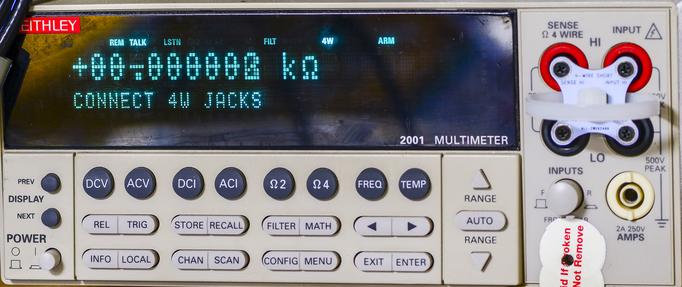
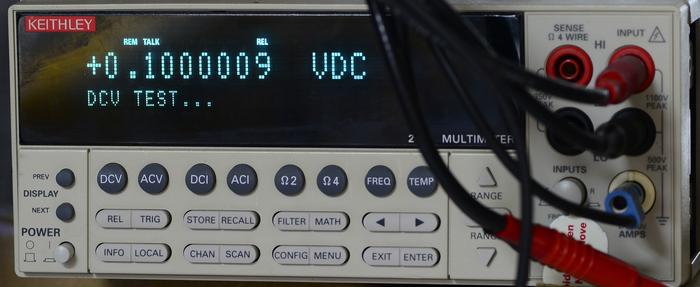
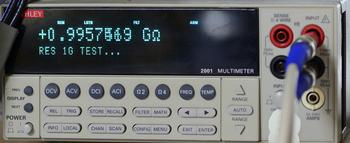
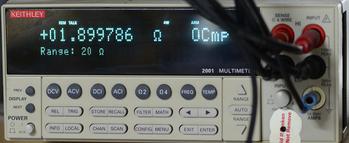
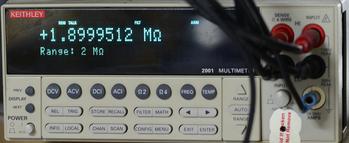
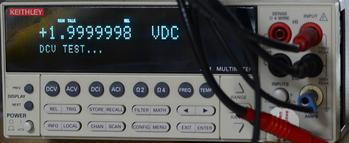
All steps and procedures were executed automatically by Python-based xDevs.com CALKit application. Equipment list used during the calibration and adjustment listed in table below:
| Reference | Keithley recommended | xDevs.com | Specifications |
|---|---|---|---|
| DC Voltage | Fluke 5700A Calibrator | Fluke 5720A Calibrator | ±5ppm basic uncertainty or better |
| AC Voltage | Fluke 5700A Calibrator | Fluke 5720A Calibrator | ±78ppm basic uncertainty or better |
| AC High Voltage | Fluke 5700A+5725A Calibrator | Fluke 5720A+5725A Calibrator | ±85ppm uncertainty or better for 750VAC |
| Low frequency ACV | Keithley 3940 | HP 3245A | Adjustment step 2V 1Hz procedure |
| Resistance | Fluke 5700A Calibrator | Fluke 5720A Calibrator | ±5ppm basic uncertainty or better |
| DC Current | Fluke 5700A Calibrator | Fluke 5720A Calibrator | ±55ppm basic uncertainty or better |
| AC Current | Fluke 5700A Calibrator | Fluke 5720A Calibrator | ±160ppm basic uncertainty or better |
| 1 GΩ Resistance | Keithley R-289-1G | Ohm Labs 109-AF 1.000037 GΩ standard | ±10000ppm basic uncertainty (xDevs used 9ppm) |
| Cables | Fluke 5440A-7002 Low thermal set | Fluke 5440A-7002 Low thermal set | |
| Frequency | Keithley 3940 Synthesizer | Keysight 33522B ARB |
Calibration reports:
MX Keithley 2001, before adjustments, as received against 24 hr spec, 14 July, 2022
MX Keithley 2001, after adjustments, as returned against 24 hr spec, 16 July, 2022
INL on few DC Voltage ranges was also measured against 5720A and reference HPAK 3458A system.
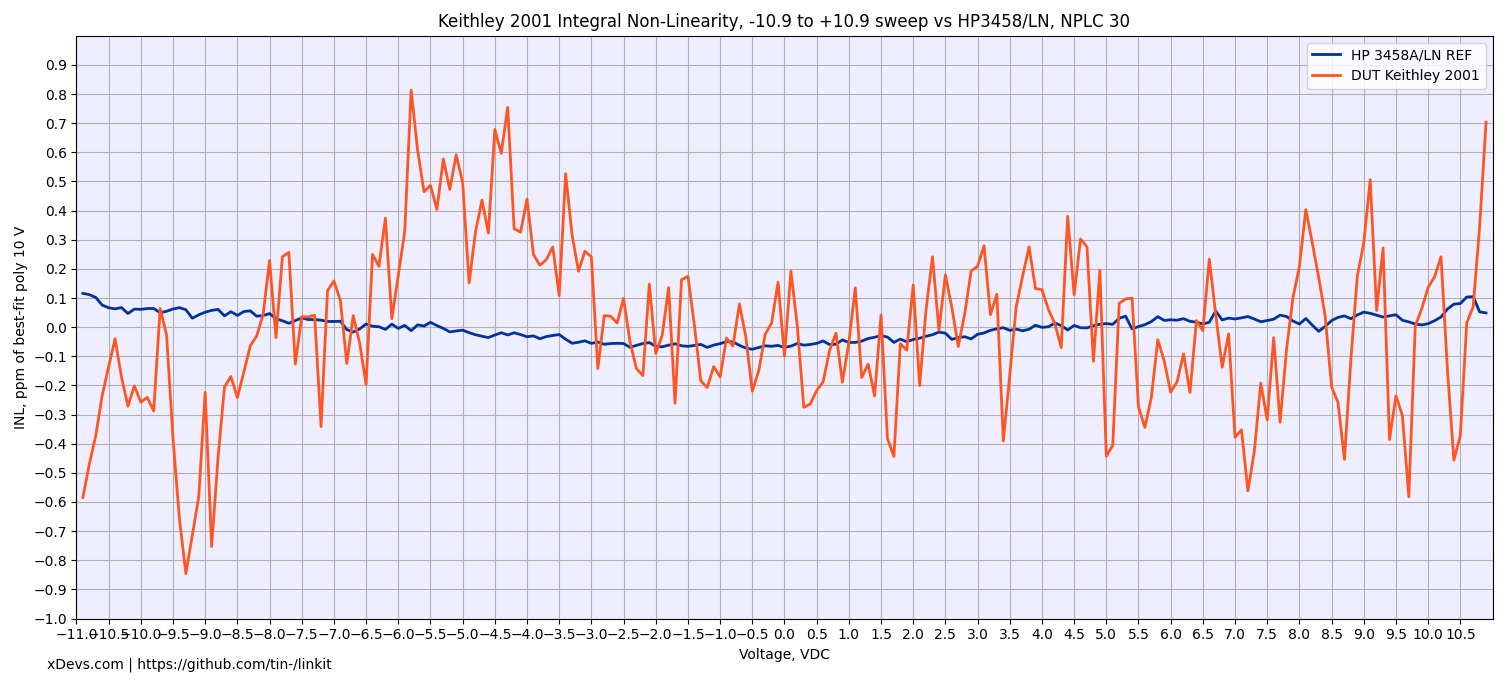
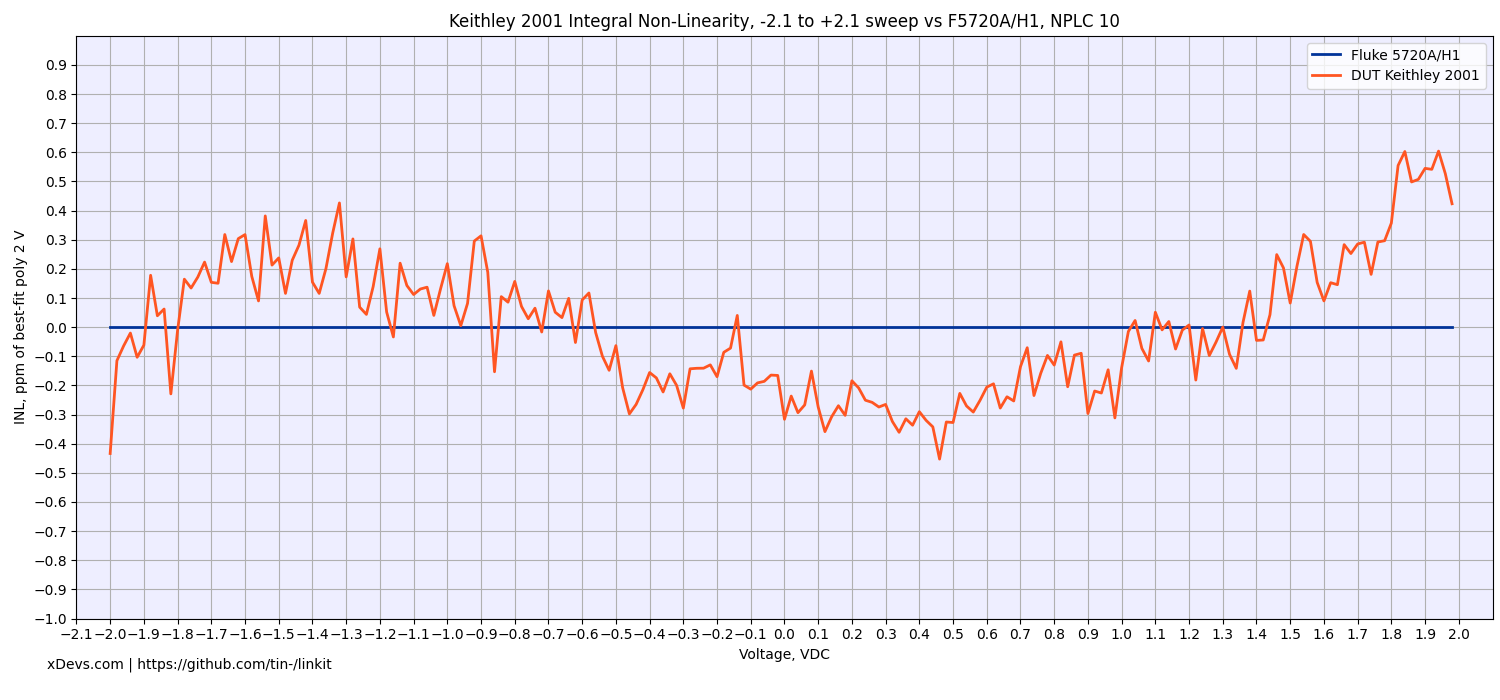
Linearity plots generated by Python analysis app, that performs best-fit and plot of residual deviations versus reference source. This is same method and procedure from INL study article . Actual code available here together with configuration file with settings.
RAW data from INL sweeps:
CSV INL-data, 2V range K2001MX, NPLC10 vs F5720A/H1, soak time 16 seconds
Day 6
Testing Standford Research DCS205 programmable DC source 10V stability. One unit was standard and second was modified with LTZ1000A reference upgrade.
Day 7
Day 8
Day 9
Day 10-11
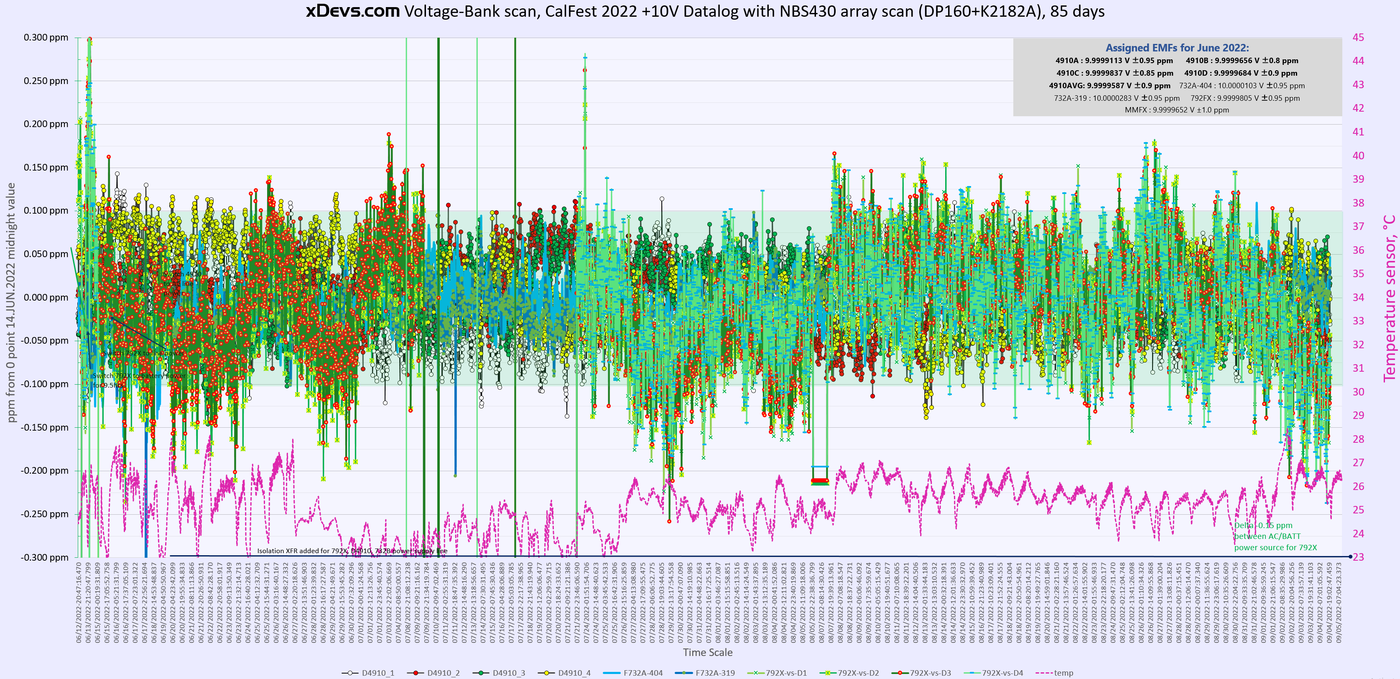
Summary results
HP3245A modification and initial calibration for Ian Johnston lab
In July 2022 fellow metrology enthusiast Ian from IanJohnston.com contacted us to help with acquisition of HP 3245A Universal source. I’ve decided to include this into CalFest 2022 process and help to calibrate it as well. Instrument was checked and verified for good operation before the swapping old LM399 to brand new lower-noise ADR1399. There was no any history on stability of this 3245A as it was sitting for years turned off in a friendly lab, so we don’t loose much by adding unaged ADR1399 at this point.
Since Ian lives in Scotland with mighty 230VAC mains power supply “paffner” filter was also replaced in advance to avoid sudden smoke release syndrome.
And finally new ADR1399 is installed:
AE-Lab’s X7000 LTZ1000CH-based reference module evaluation
Module design
AE-Labs is a friendly homelab from Belgium, EU that is participating in CalFest 2022 in remote capacity. To aid with interlab comparisons multiple artifacts for voltage and resistance were shipped using standard commercial services (USPS/EMS Post).
DC Voltage travel reference evaluation was realised by LTZ1000CH-based module, called X7000. It is fully open design, published on github and available for pondering. I guess X7000 calling was a tribute naming to recognize efforts in commercial reference design by Wavetek Model 7000. It was shipped in cold unpowered state due to shipping time and cost/weight constrains.
This rather pretty PCB utilize routing on 4-layer FR4 material with ENIG plating. I’ve received additional unpopulated PCB as well as partially populated PCB without LTZ chip.
Unlike typical LTZ-datasheet schematics with precision low-TCR resistors this reference using alternative passives approach by utilizing equal value NOMCT TaN isolated resistor networks.
Author also opted for ADA4523-1 opamp instead of traditional LT1013. ADA4523-1 is new generation chopper low noise R2R-amplifier with switching frequency 330 kHz and GBP ~5 MHz with supply voltage up to 36 V or ±18 V. It is priced around $1.18 USD from manufacturer in 121 pcs quantity.
LTZ1000CH chip with datecode week 12 year 2022 mounted almost flush to the surface of the board, with short pins, just the way we like it here.
Infrared thermograph reveals number of hotspots and gradients present on the PCB. It is easy to spot hot spots around opamps, power transistor for heater and heating from LTZ1000CH (non-A) super-zener chip. Board is quite compact, hence gradient effects are more pronounced here than on the larger boards, such as FX or QVR.
Thermograph shown above is for indication only, it is NOT traceably calibrated to emissivity and reflection coefficients of different materials. Accurate thermal imaging is tricky feat and outside of the voltage reference comparison scope here.
Here’s also size comparison to other LTZ1000-based reference projects, such as KX, FX and QVR as well as commercial HP3458A A9, 34470A modules. Small aluminum PCB with SZA263/LTFLU also represented in bottom right corner.
X7000 temperature coefficient characterization
After initial 2 weeks or constant power warm-up time X7000 module was subjected to temperature sweep from +17.9 °C to +30.3 °C to determine temperature coefficient. For this study reference was powered from Keithley 2400 SMU with +13.0 VDC (max 100mA) and output digitized by golden HP 3458A. This particular 3458A does not have measurable temperature coefficient on main 12VDC range, hence room temperature variation effects were highly rejected. For this experiment DUT X7000 was placed
Measurement was performed with X7000 placed in xDevs’s miniTEC airbath with programmable temperature control, thanks to Keithley 2510 TEC SMU and open-sourced TECKit Python-based automation app. Readback of air temperature next to X7000 module was perfomed with HEL-705 100 Ω Platinum RTD and Fluke 1529 Chub-E4 thermometer readout. Temperature sweep parameters shown in table below.
| Parameter | Test value | Speed |
|---|---|---|
| Initial temperature step | +23.0 °C for 300 minutes | |
| Temperature ramp 1 | Up to +30.3 °C over 480 minutes | +0.0152 °C/minute |
| Soak temperature step | Fixed +30.3 °C over 240 minutes | |
| Temperature ramp 2 | Down to +23.0 °C over 480 minutes | -0.0152 °C/minute |
| Soak temperature step | +23.0 °C for 240 minutes | |
| Temperature ramp 4 | Down to +17.9 °C over 480 minutes | -0.0152 °C/minute |
| Soak temperature step | Fixed +30.3 °C over 240 minutes | |
| Temperature ramp 5 | Up to +23.0 °C over 480 minutes | +0.0152 °C/minute |
| Final temperature step | +23.0 °C for 300 minutes | |
| Total experiment time | 3240 minutes, or 54 hours |
Polynominal TC fit of the output voltage calculated to coefficients as α = +0.093 ppm/°C and β = -0.001 ppm/°C2. Box TC method provided similar result at +0.119 ppm/°C. This is rather high temperature coefficient for LTZ1000-based reference and positive TC suggests too much overcompensation implemented in tested module design. Good LTZ1000-based reference design typically capable to demonstrate temperature stability better than 0.03 ppm/°C.
There was also some small 0.15ppm hysteresis visible after the 54-hour long temperature sweep, but it is well below uncertainty of the measurement setup and noise contribution. Overall approach for high stability references is to maintain them constantly operated at stable environment conditions to capitalize on their drift linear characteristics.
X7000 output temperature coefficient characterization, March 2024
Additional 10V output was also tested for stability over the temperature range from +18 °C to +28 °C. Temperature sweep was executed over 287 hours duration, with measurement done by HP 3458A long-scale DMM recently calibrated from fixed DC standard. RAW SVG-page with datafile is available .
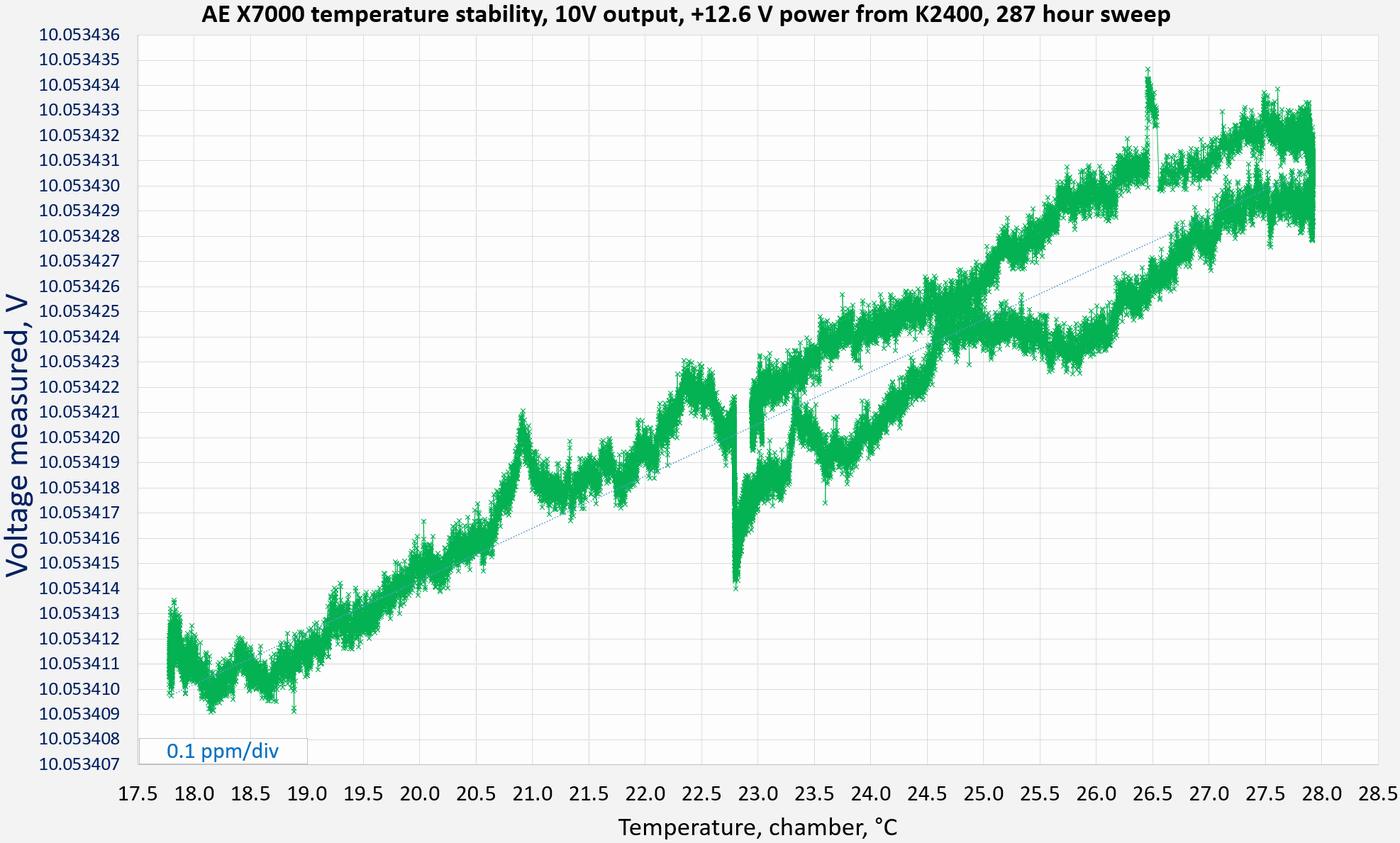
Output was measured at large +5342 ppm off nominal 10V with polynominal 2nd order fit constants 4.0738535E-8x2 + 1.7978161E-7x + 10.053394. These constants can be translated to TCV coefficients as α = +0.204 ppm/°C and β = +0.004 ppm/°C2 with zero temperature at -2.2 °C. Faster sweep done in February 2024 also provided similar results at α = +0.212 ppm/°C and β = +0.002 ppm/°C2 with zero temperature at -45.7 °C.
X7000 PSRR charactrization
For this benchmark voltage supply supplied by Keithley 2400 to module was sweeped from +10.2 VDC up to +20.2 VDC and output voltage was measured with same group of three HP3458A 8½-digit DVM. This experiment resulted in data to provide information on how voltage reference’s DC output depend to DC input power supply voltage variation, which can be important for battery-powered use and low-power applications.
And top secret xDevs confidential RAW data file with all data points produced by this experiment run. X7000 module was placed in same thermal chamber bath at fixed +23.0 °C to ensure no ambient temperature change effect in PSU rejection performance test.
Based on this result one can conclude presence of small output sensitivity to the DC input power supply voltage around +0.09 µV/V. Part of the reason is due to thermals change and lack of the linear pre-regulator at the module that would decouple DC input voltage level from the reference core power input. In typical applications or even possible 6½-digit DMM use this change is insignificant and would be buried in noise anyway.
Also it’s rather extreme case for LTZ1000 reference see DC in voltage change from +20V to +10.2V. If we use such module in battery powered application and assume fresh battery discharge from +13.5 VDC to +10.5 VDC (-28.5% change) that will result in absolute DC output change -0.4 µV/V which is often still acceptable given the typical 10V measurement uncertainty at 0.3-0.5 µV/V levels.
X7000 noise measurement
X7000 Output voltage calibration
Based on these measurement results output of X7000 module was assigned value 10.053426 V ±2 µV/V with +12.6 V input supply power.
DIY 10 kΩ travel resistance standard
To support new friend’s metrology activity at ES Lab within CF2022 project additional home-made standard was built. This device was not designed to have decades long sub-ppm stability or any unobtanium fancy expensive components. It is just interesting experiment on how good (or bad) performance can be achieved by placing generic VPG VHP202ZT 9998 Ω 0.1% resistor into die cast box with four low-thermal bare copper connectors.
Many of the beginner hobby metrology enthusiasts buy precision BMF resistors to build low-cost resistance standard boxes to obtain fixed point resistance artifacts. These boxes later can be calibrated using known good DMM or sent to calibration laboratory to provide accredited measurement value.
Boxes can be built with many variations and possible options, but one shown here is pretty basic and can be done in just few hours on a lazy weekend. I already had binding posts and unused metal box, as well as resistor.
Transfer of actual calibration value was done with automatic resistance bridge from Measurements International, Model 6010B. xDevs.com’s ESI SR104 was utilized as a known reference to obtain traceable resistance measurement. Temporary 1 kΩ unit was utilized in between the DUT box 9.998 kΩ and SR104.
Test current was set to 316 µA to meet 10 mW maximum power limitation on 1 kΩ transfer unit.
Conclusion and future plans
This year CalFest was a blast with special guests and additional side activities. We managed to perform good transfers for DC resistances in range from 10 kΩ to 1 GΩ using commercial reference standards. With aid of multiple standards calibrated by Measurements International our in-house capability to compare resistances from 1 MΩ to 100 MΩ were tested and verified at ppm levels. These high resistance measurements capabilities will be further explored with custom dual source active-arm resistance bridges and sensitive current detectors. Hopefully in CalFest 2023 we can explore resistance metrology above 100 GΩ as well.
TheSignalPath visit to xDevs lab was also worthy feat and we had great fun and excellent opportunity to discuss aspects of today’s technology in person, various measurement methods, used test equipment and RF technology. What was supposed to be friendly visit and quick calibration for TSP’s HP 3245A Universal Source turned into multi-hours long hands-on treat with repairing few broken RF test equipment units ;-). Shahriar proved once again his excellent knowledge of RF test equipment and managed to quickly troubleshoot projects even at very RF-underequipped xDevs DC-type lab :) Hopefully I can also extend the collaboration with return visit in future for more interesting projects.
As for CalFest 2023, it’s idea remains the same: bring electronics and test equipment enthusiasts together and share the precision calibration projects among members in Canada and USA. We would love to include other geography members too, but logistically it’s quite a challenge, considering that this is not sponsored or business funded activities for all of us.
Projects like this are born from passion and a desire to share how things work. Education is the foundation of a healthy society - especially important in today's volatile world. xDevs began as a personal project notepad in Kherson, Ukraine back in 2008 and has grown with support of passionate readers just like you. There are no (and never will be) any ads, sponsors or shareholders behind xDevs.com, just a commitment to inspire and help learning. If you are in a position to help others like us, please consider supporting xDevs.com’s home-country Ukraine in its defense of freedom to speak, freedom to live in peace and freedom to choose their way. You can use official site to support Ukraine – United24 or Help99. Every cent counts.
Modified: June 19, 2024, 8:20 a.m.

